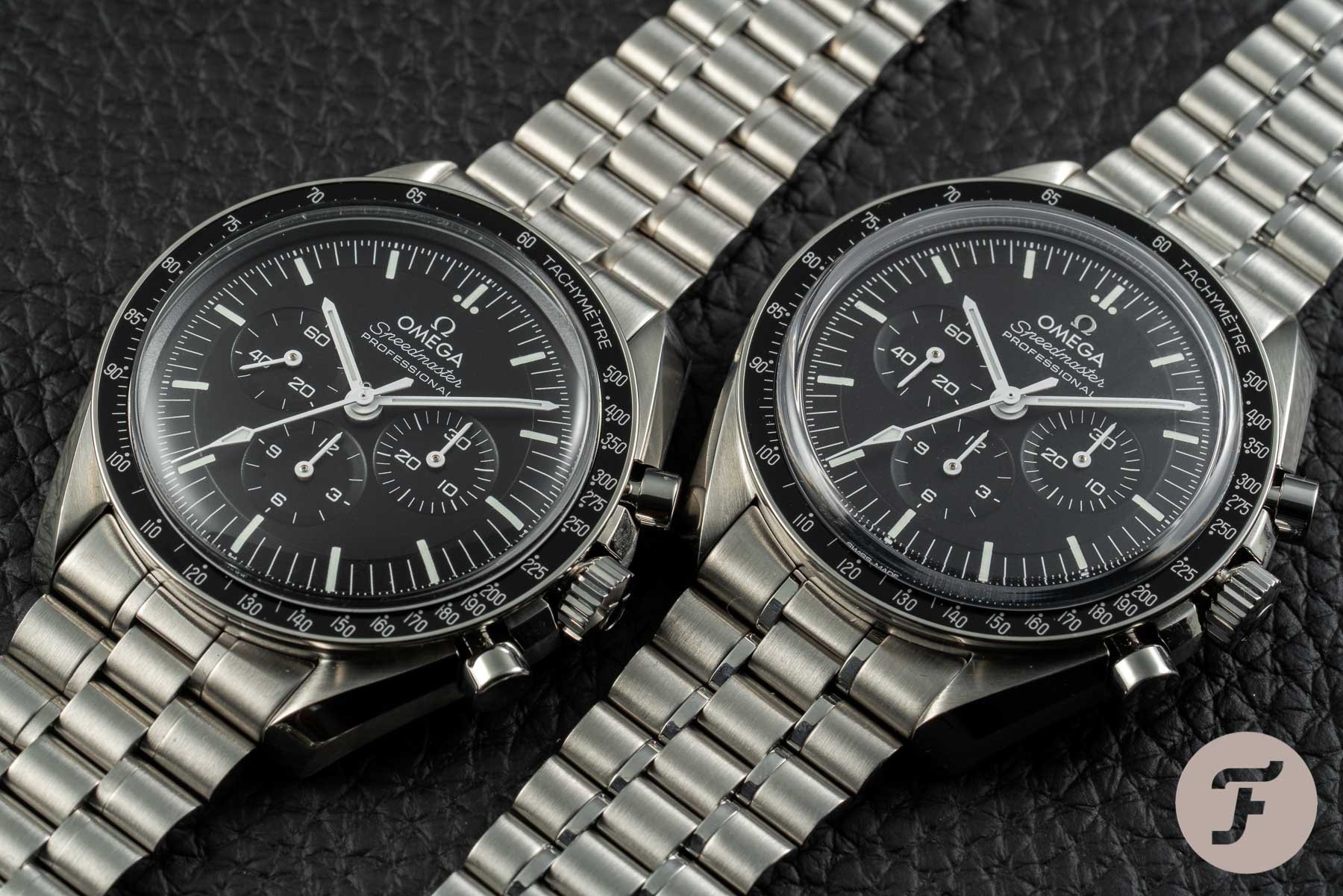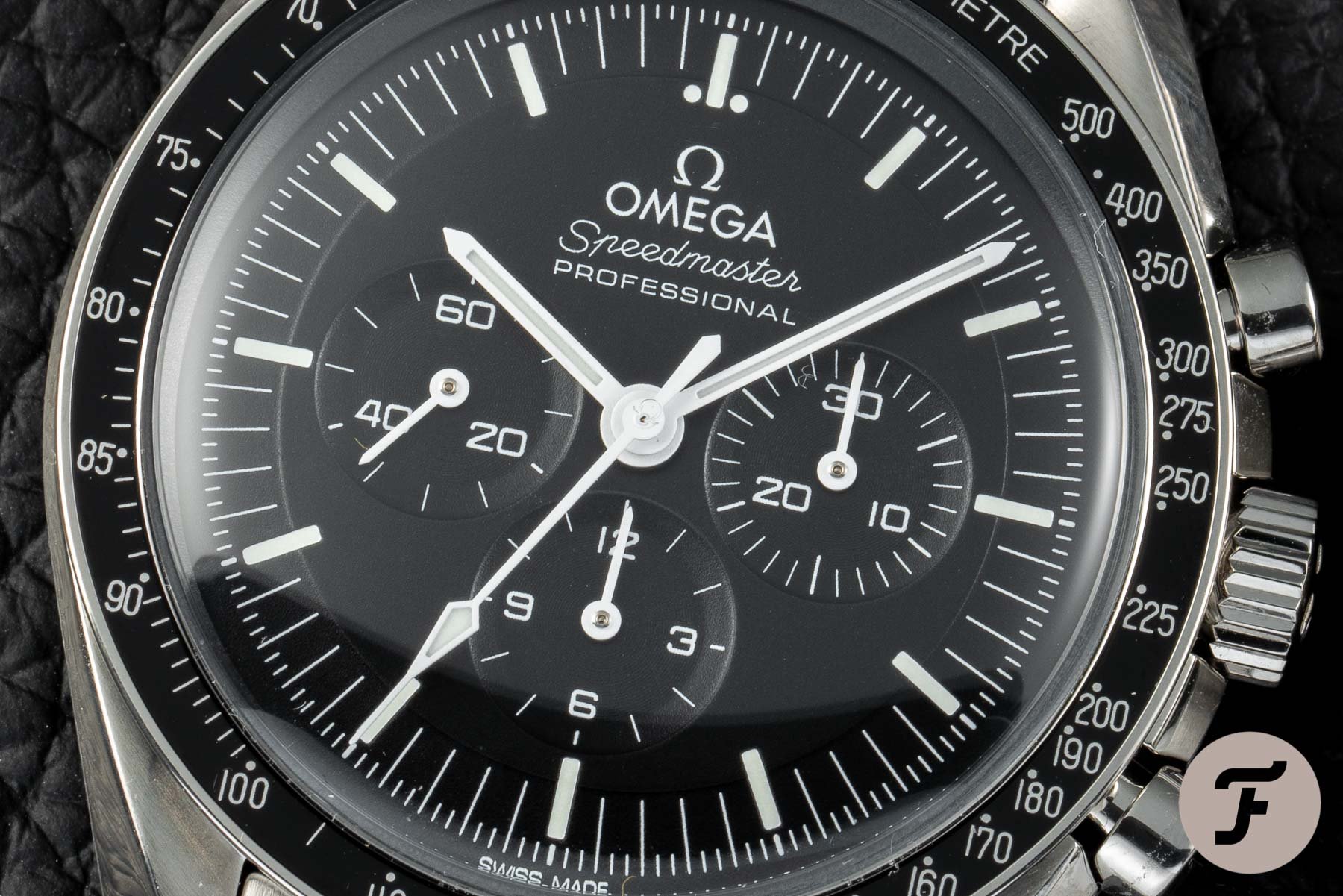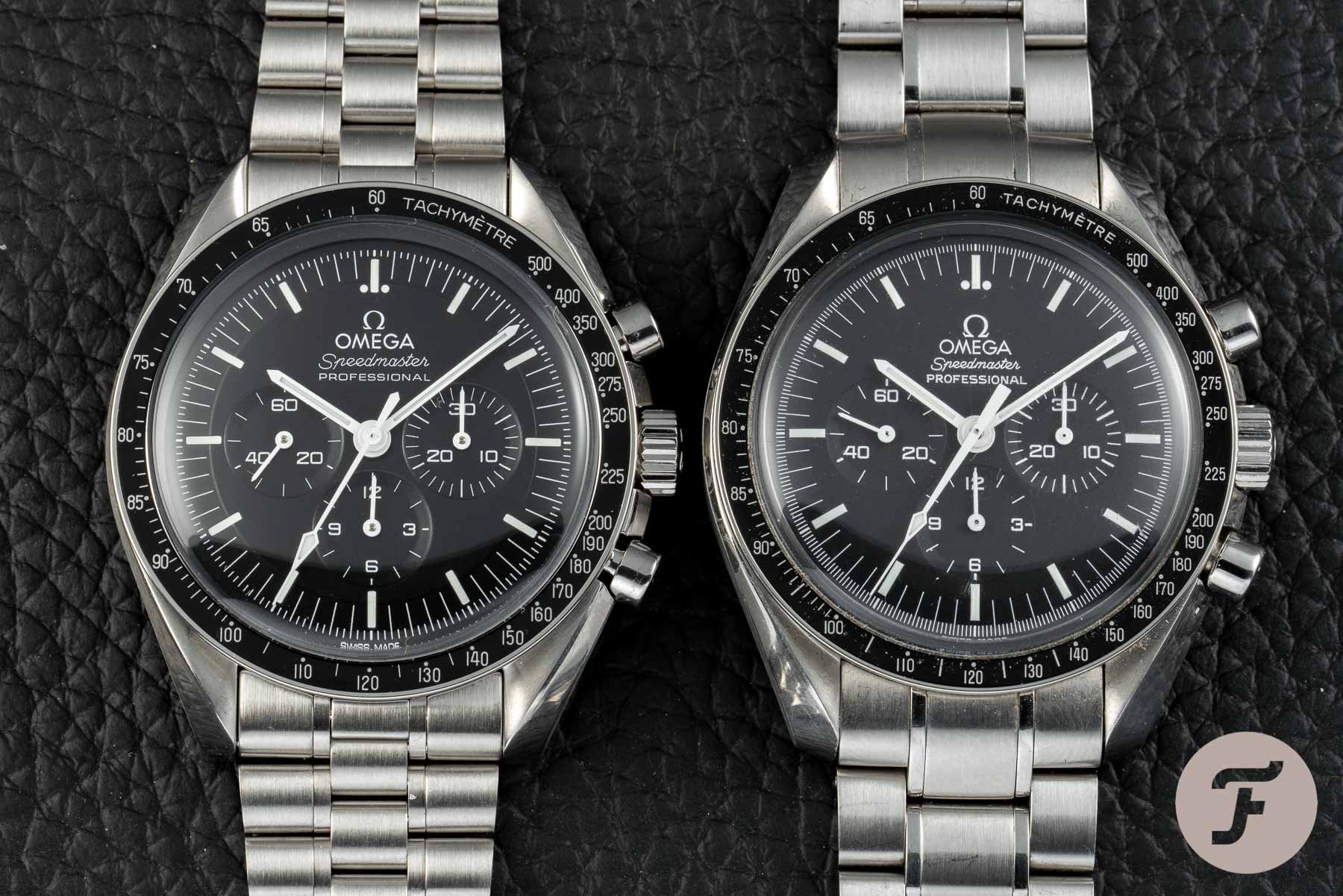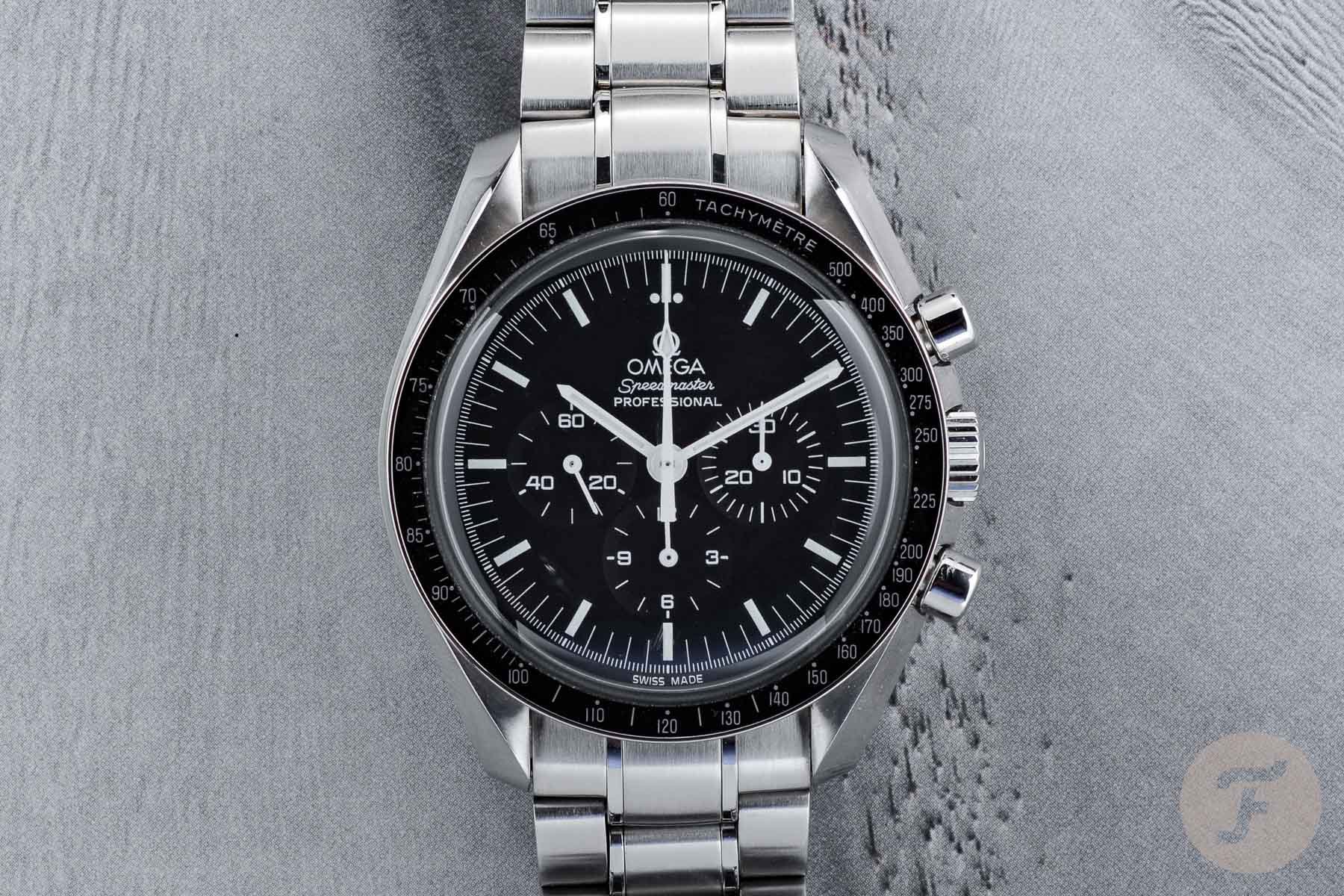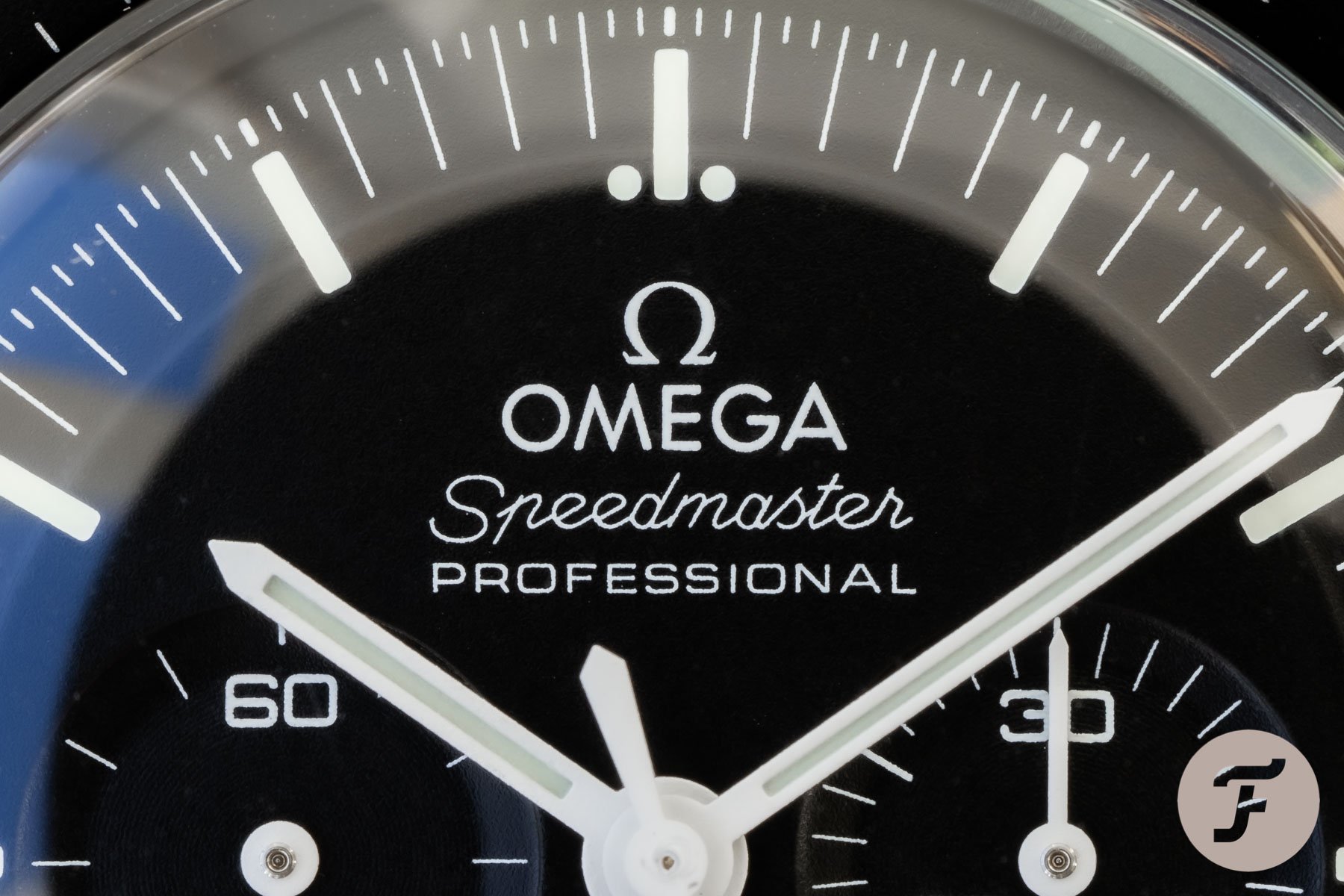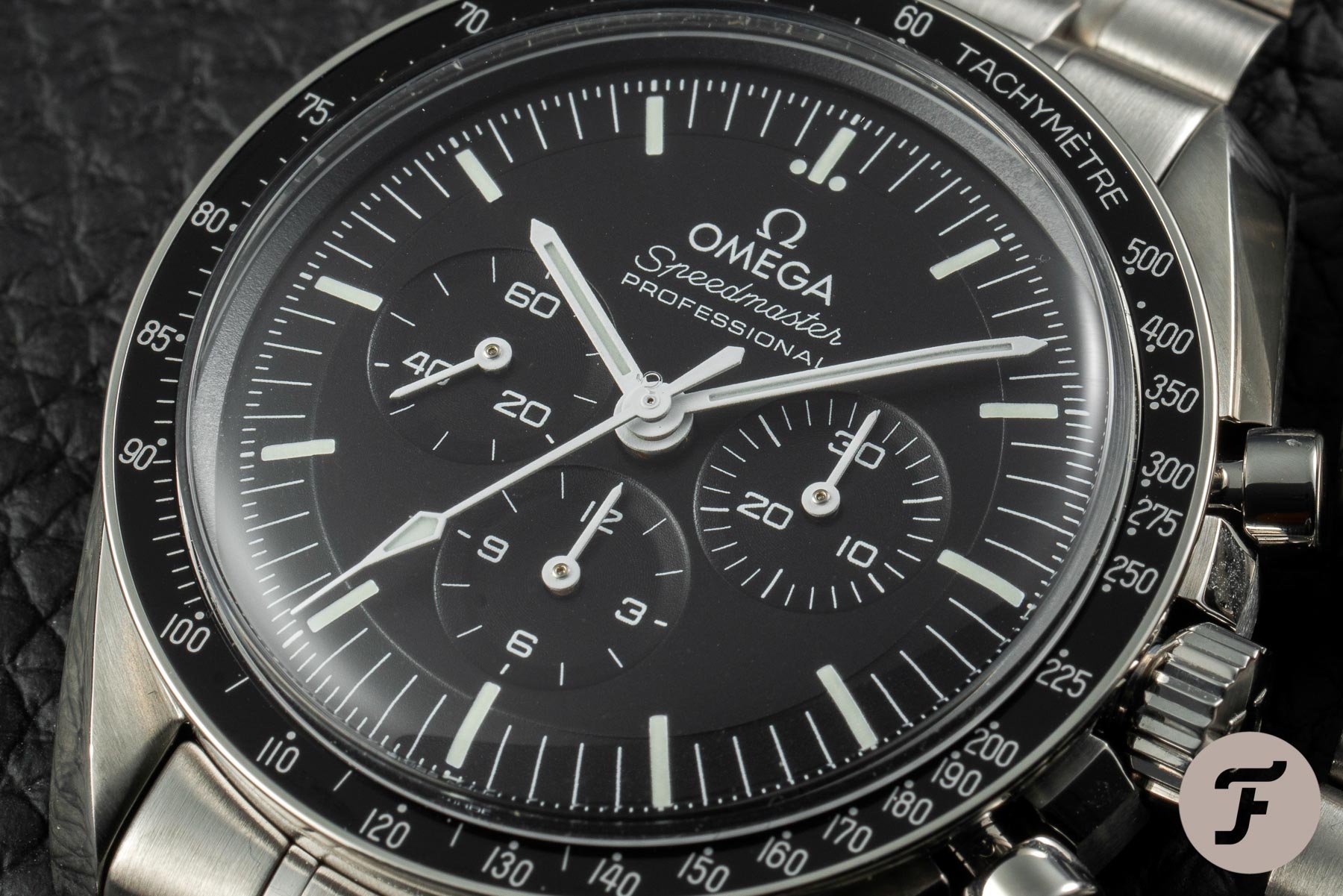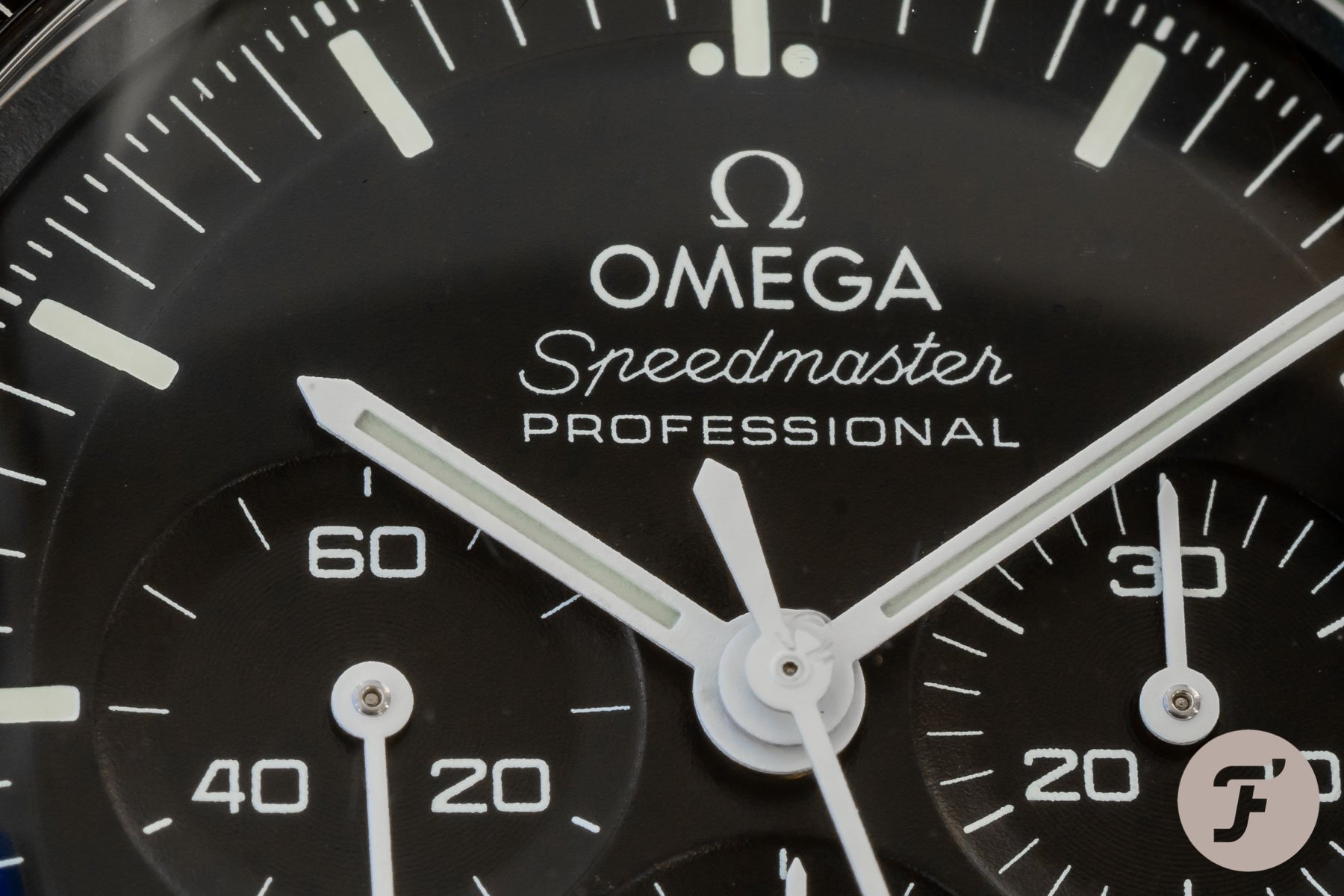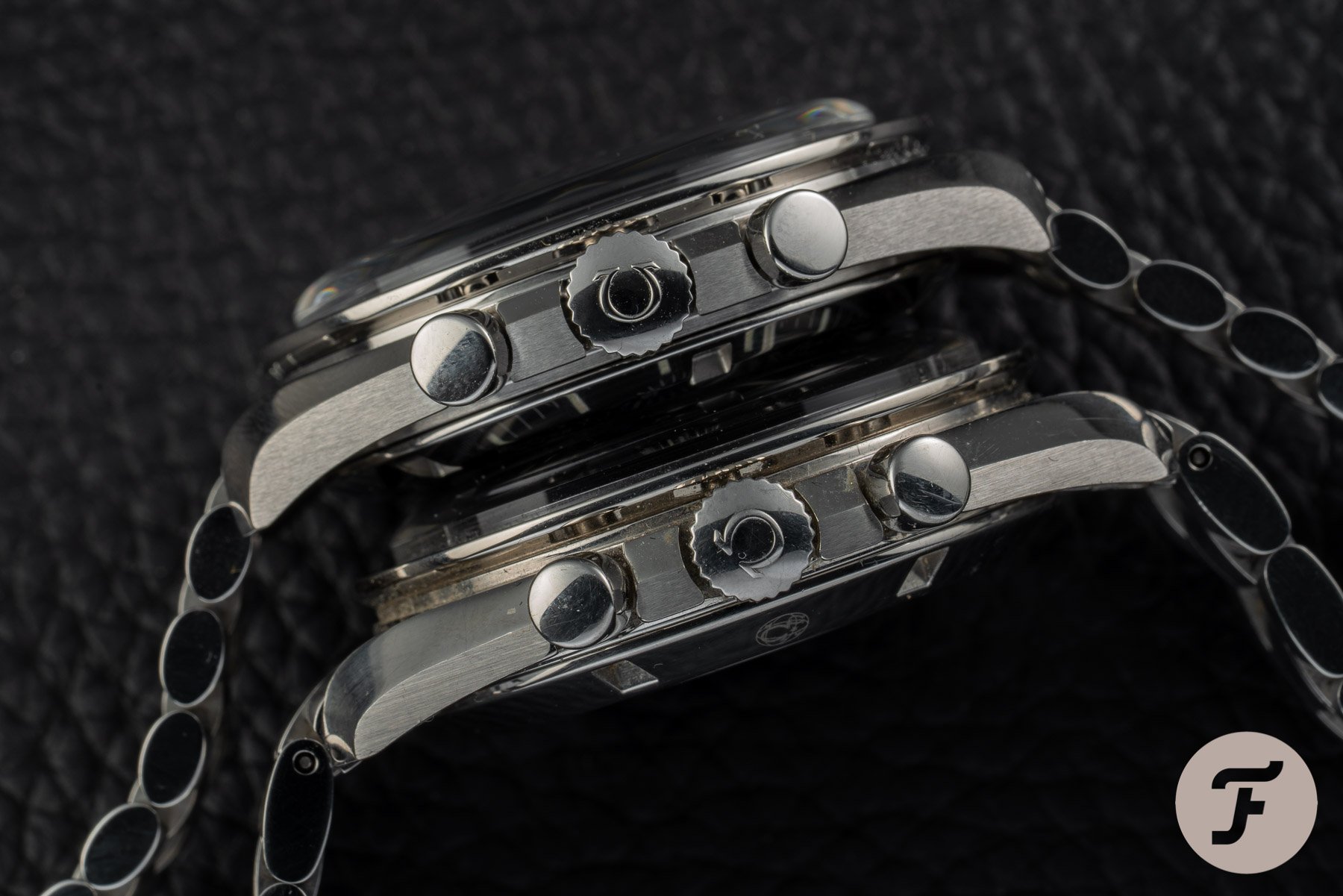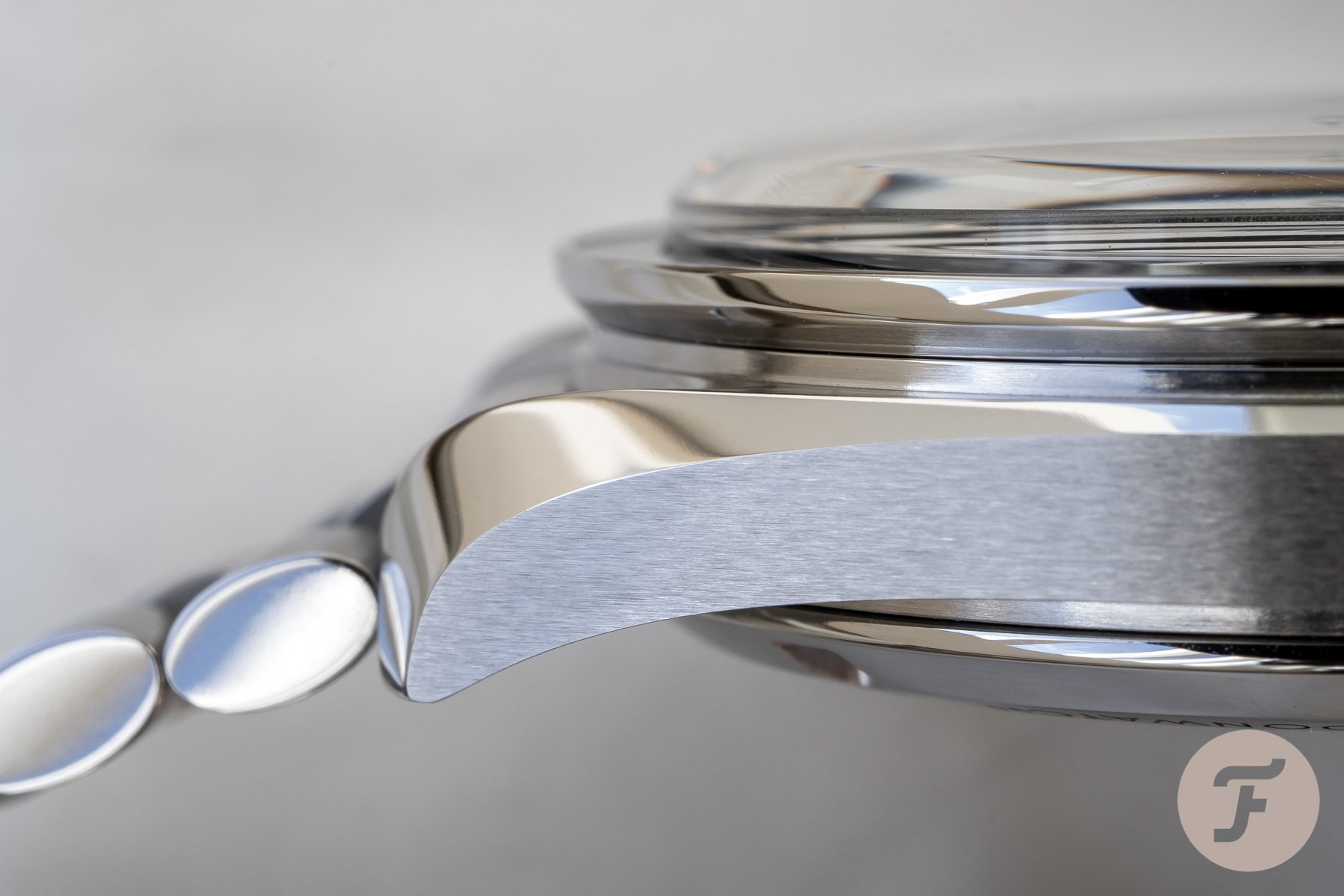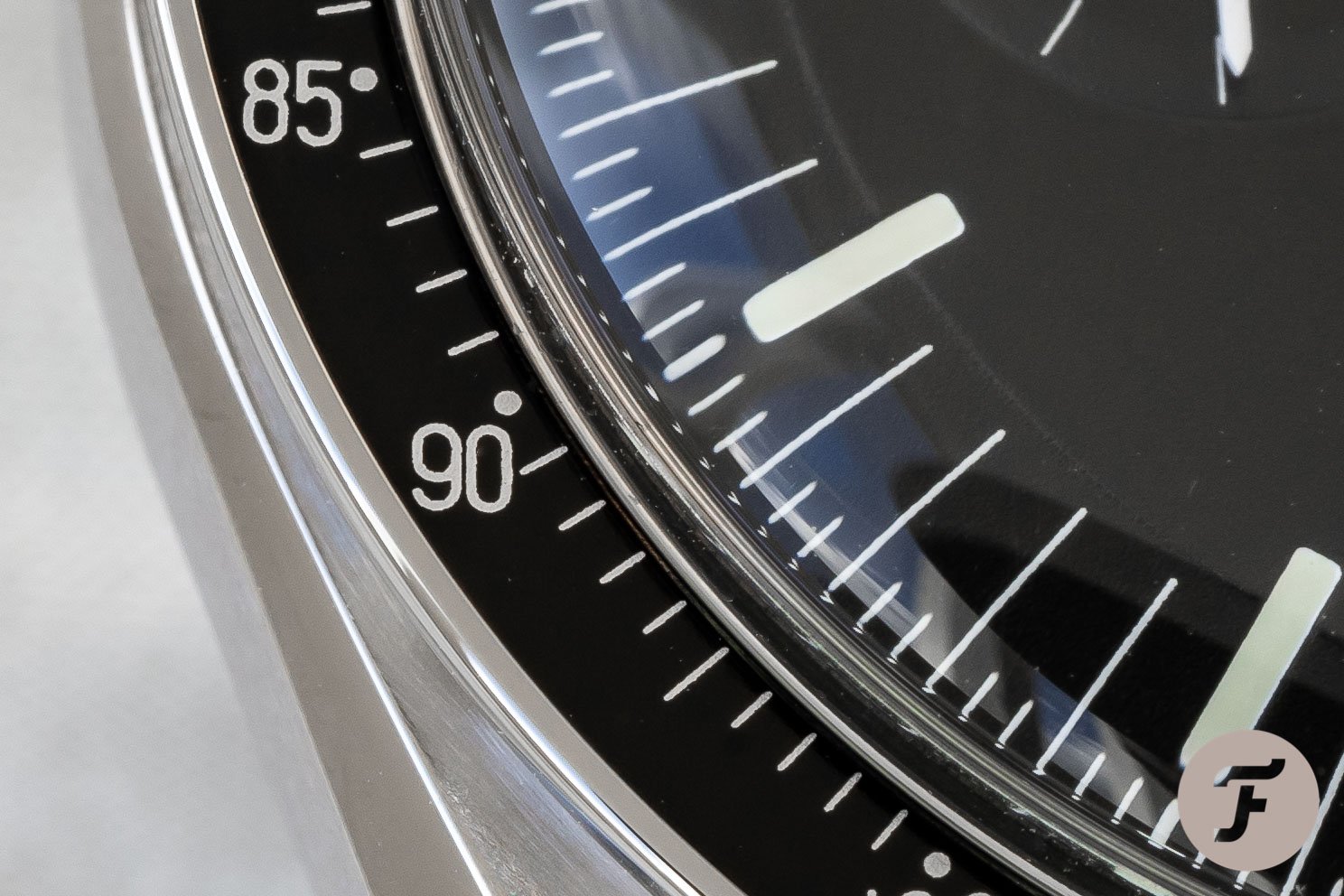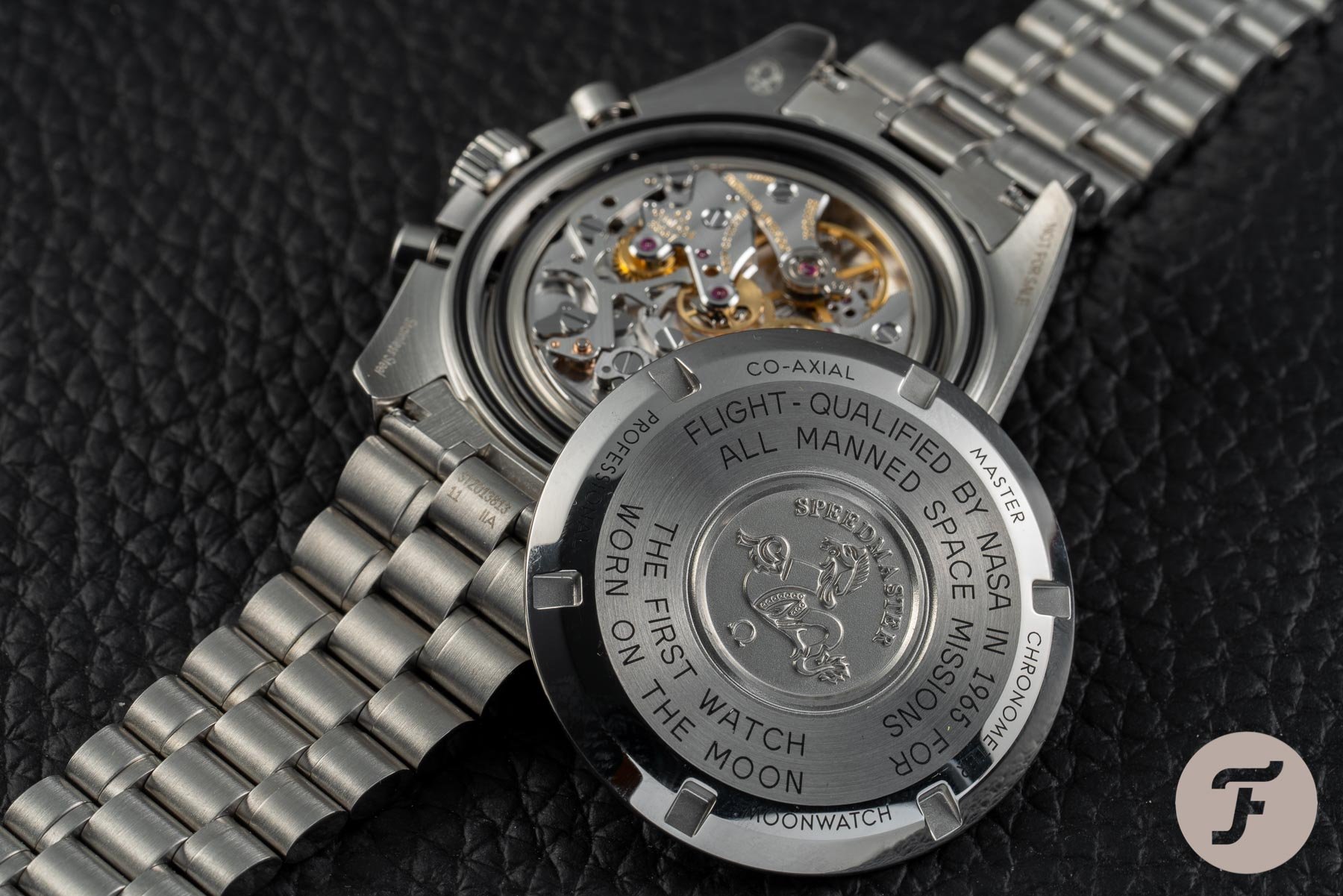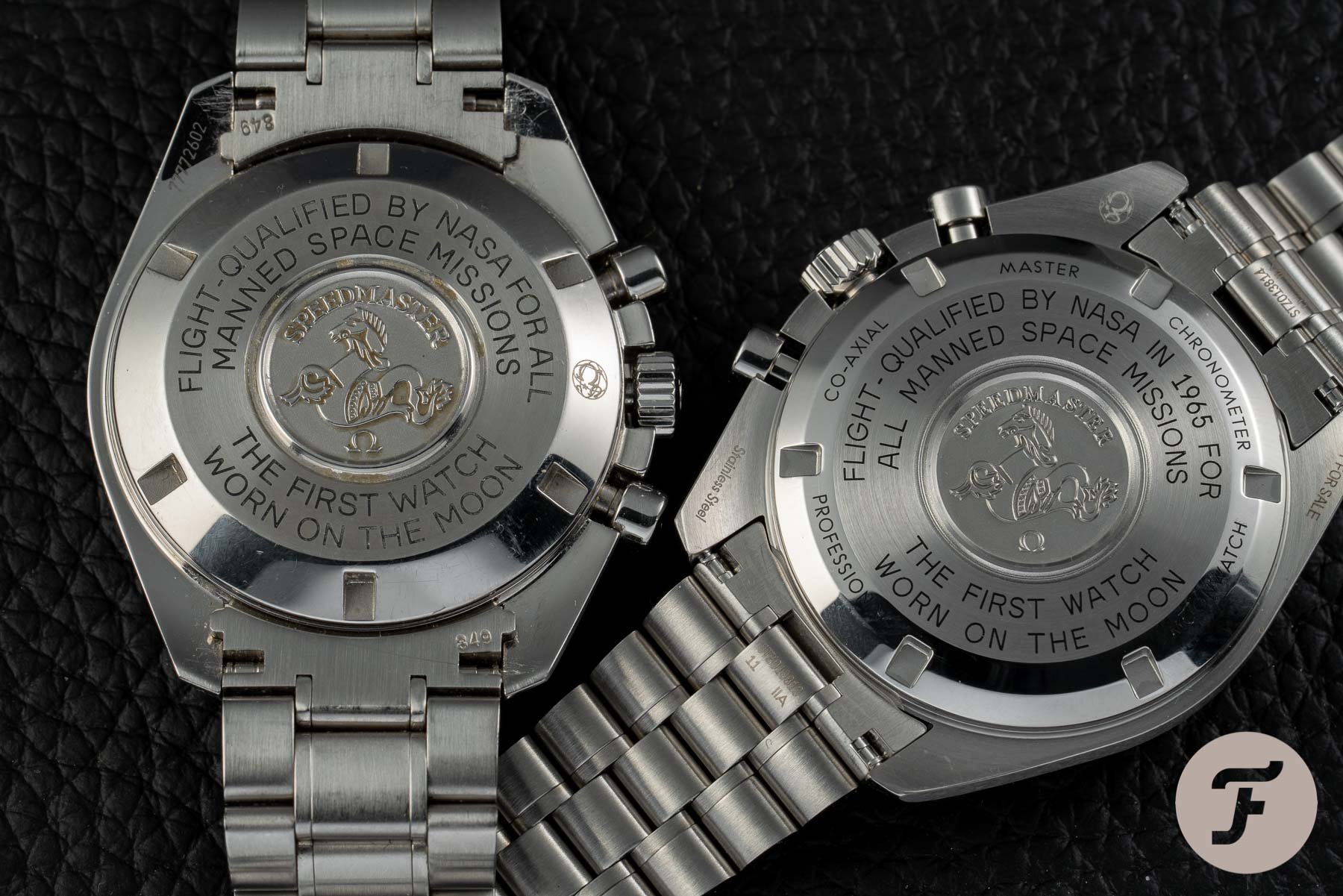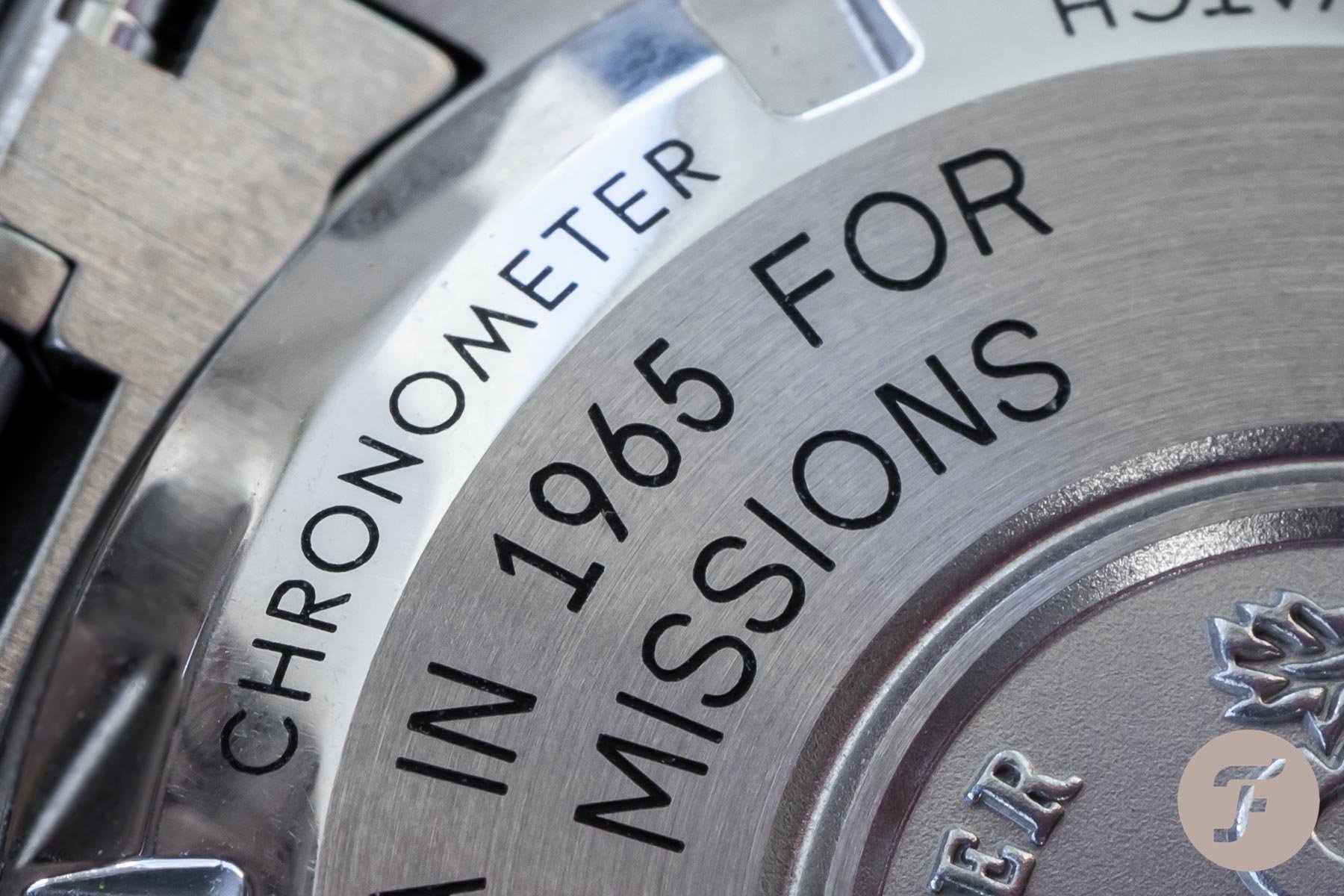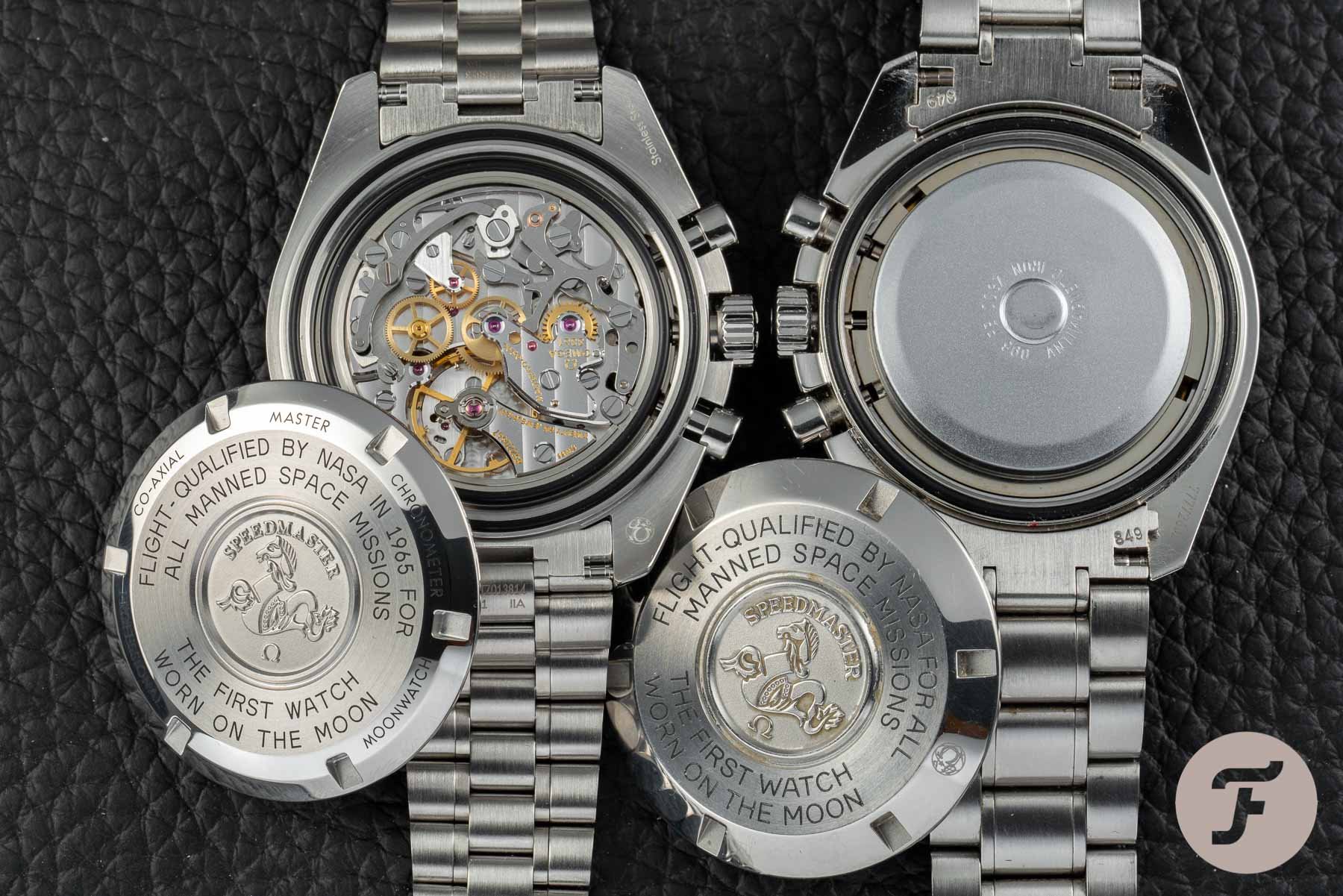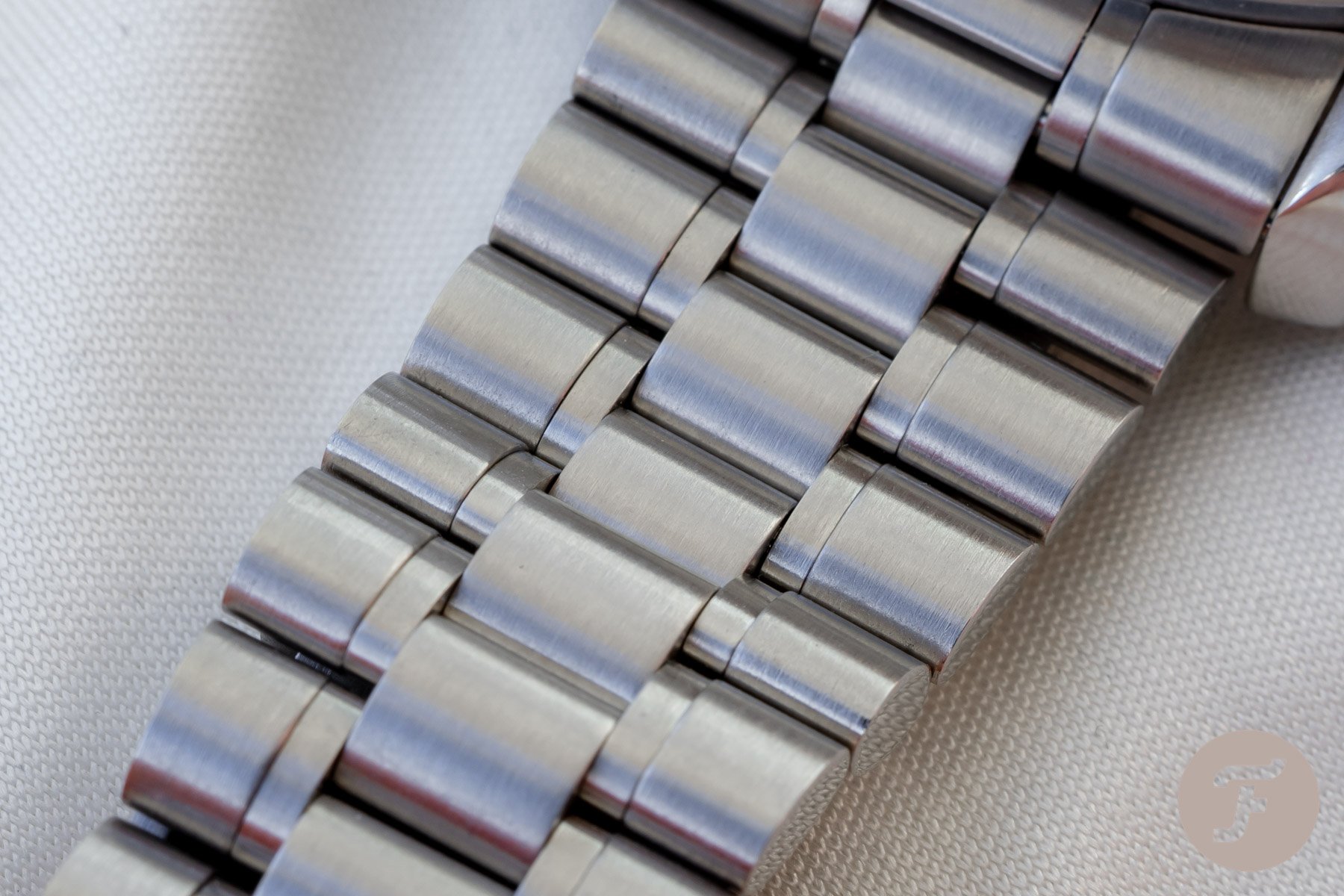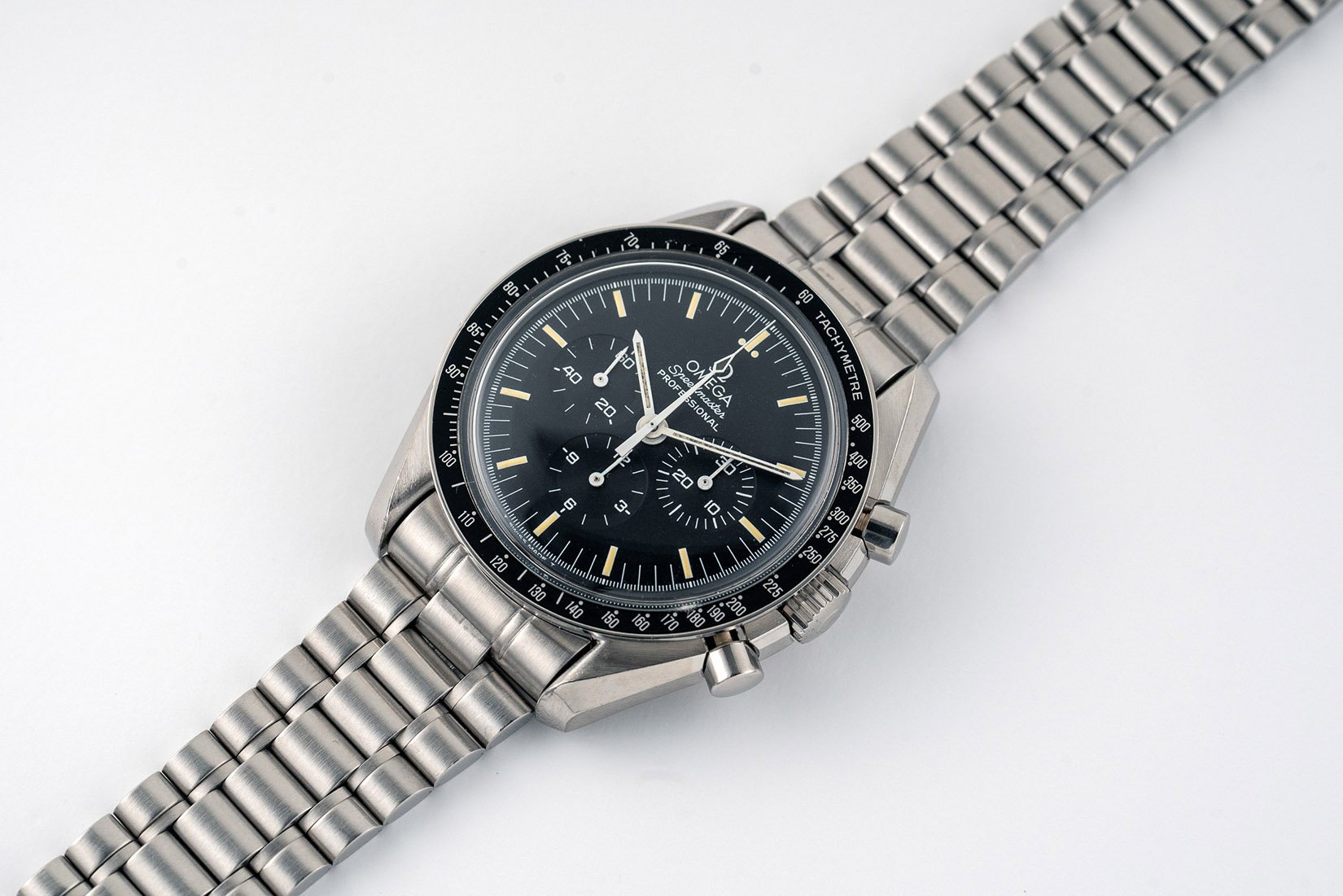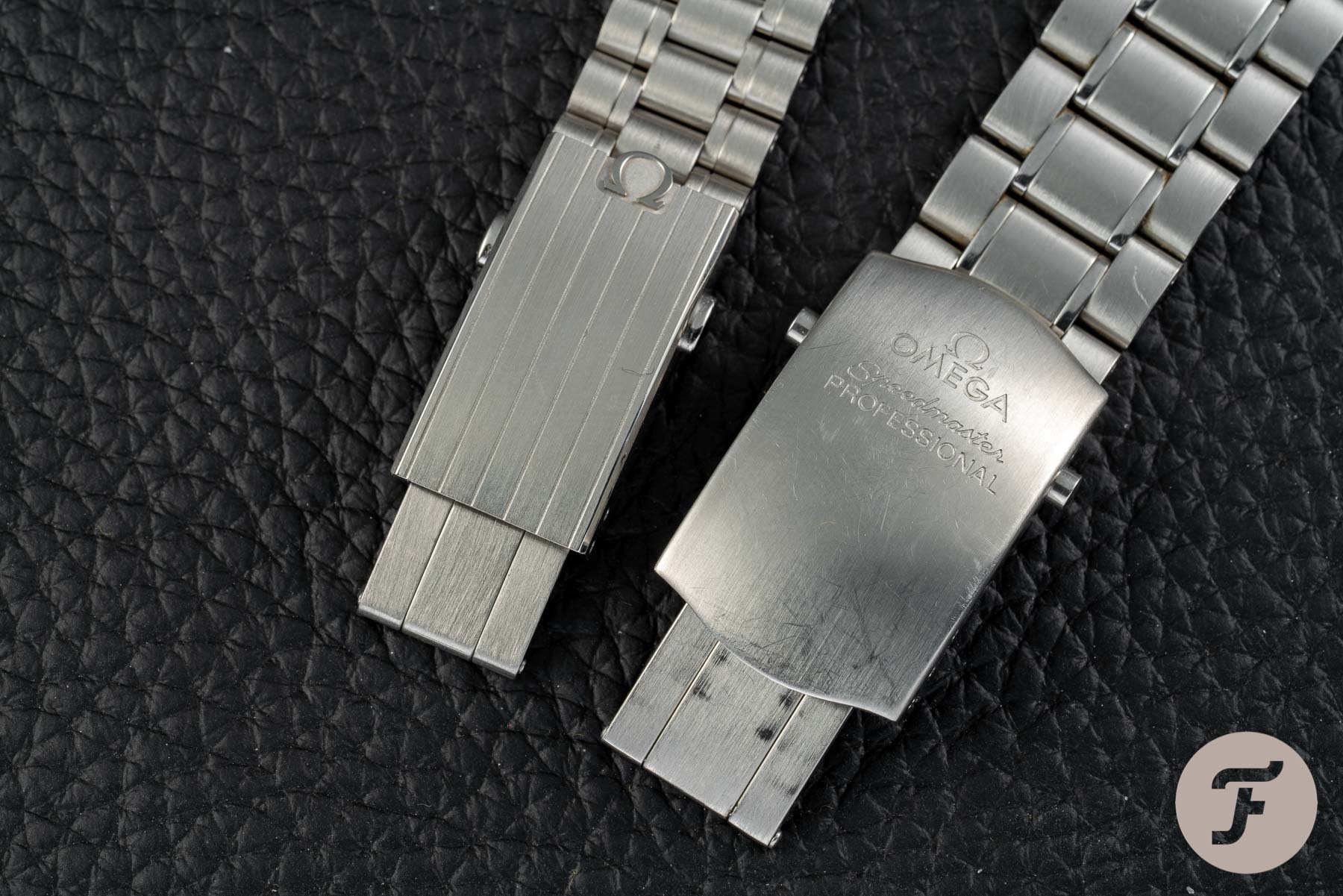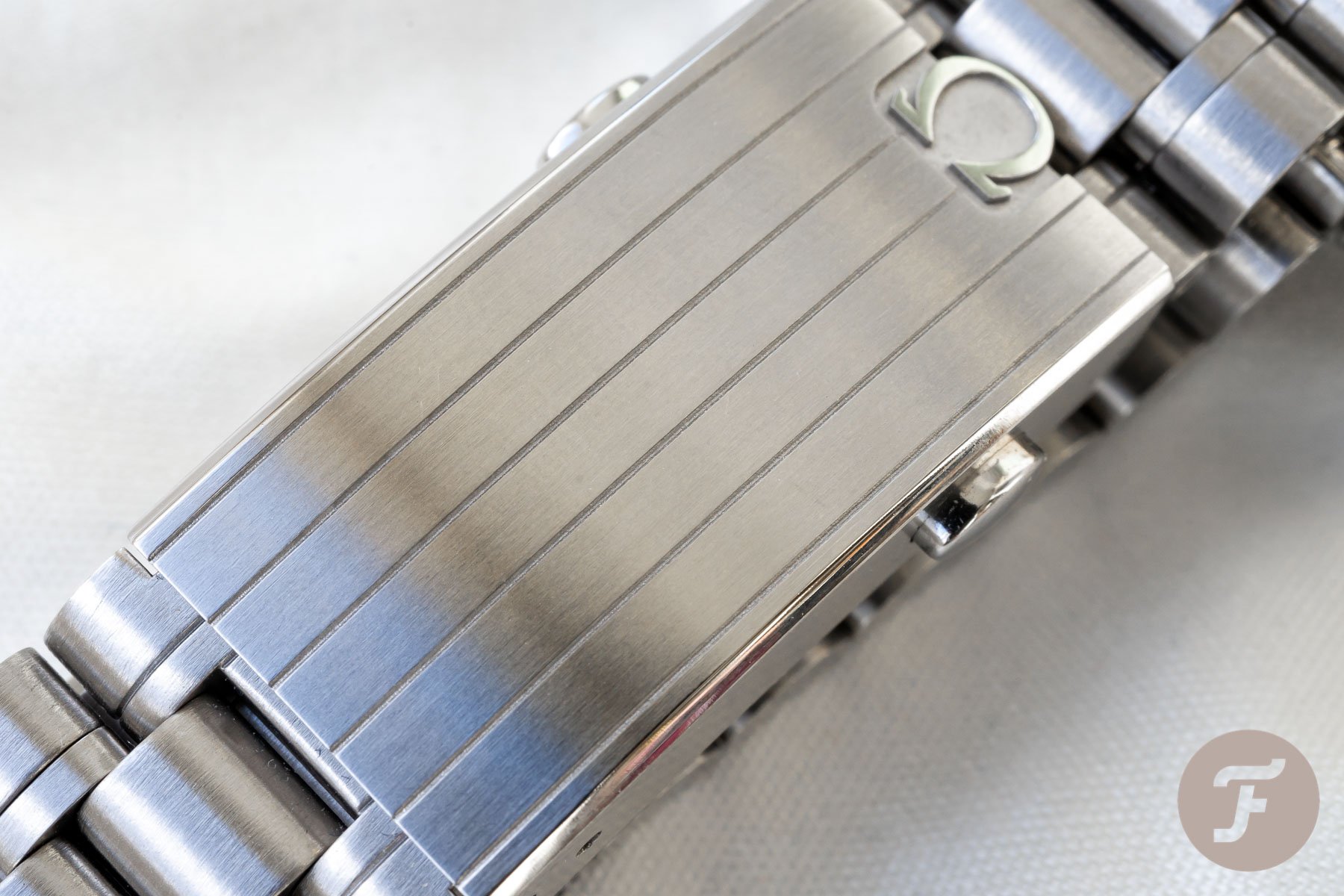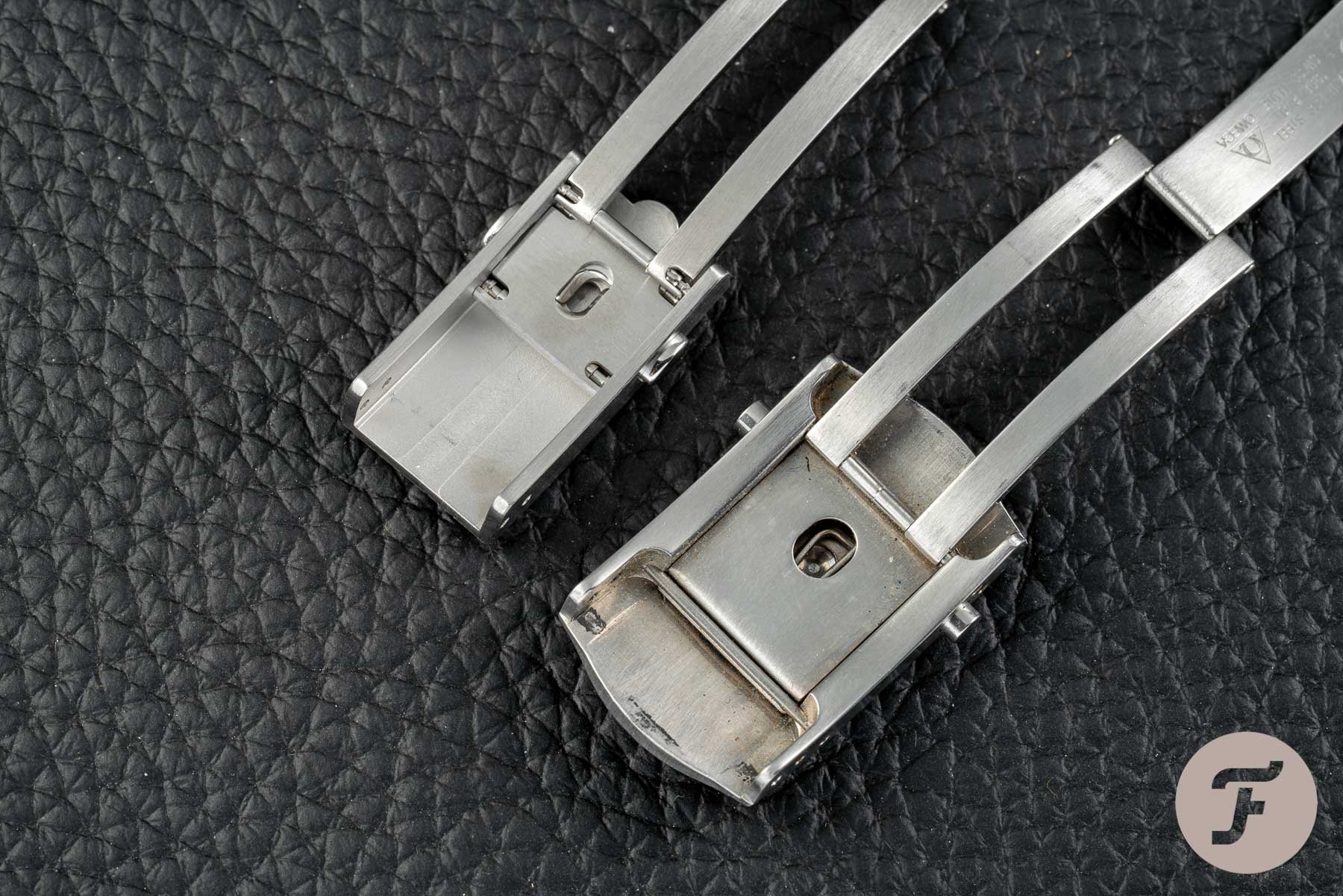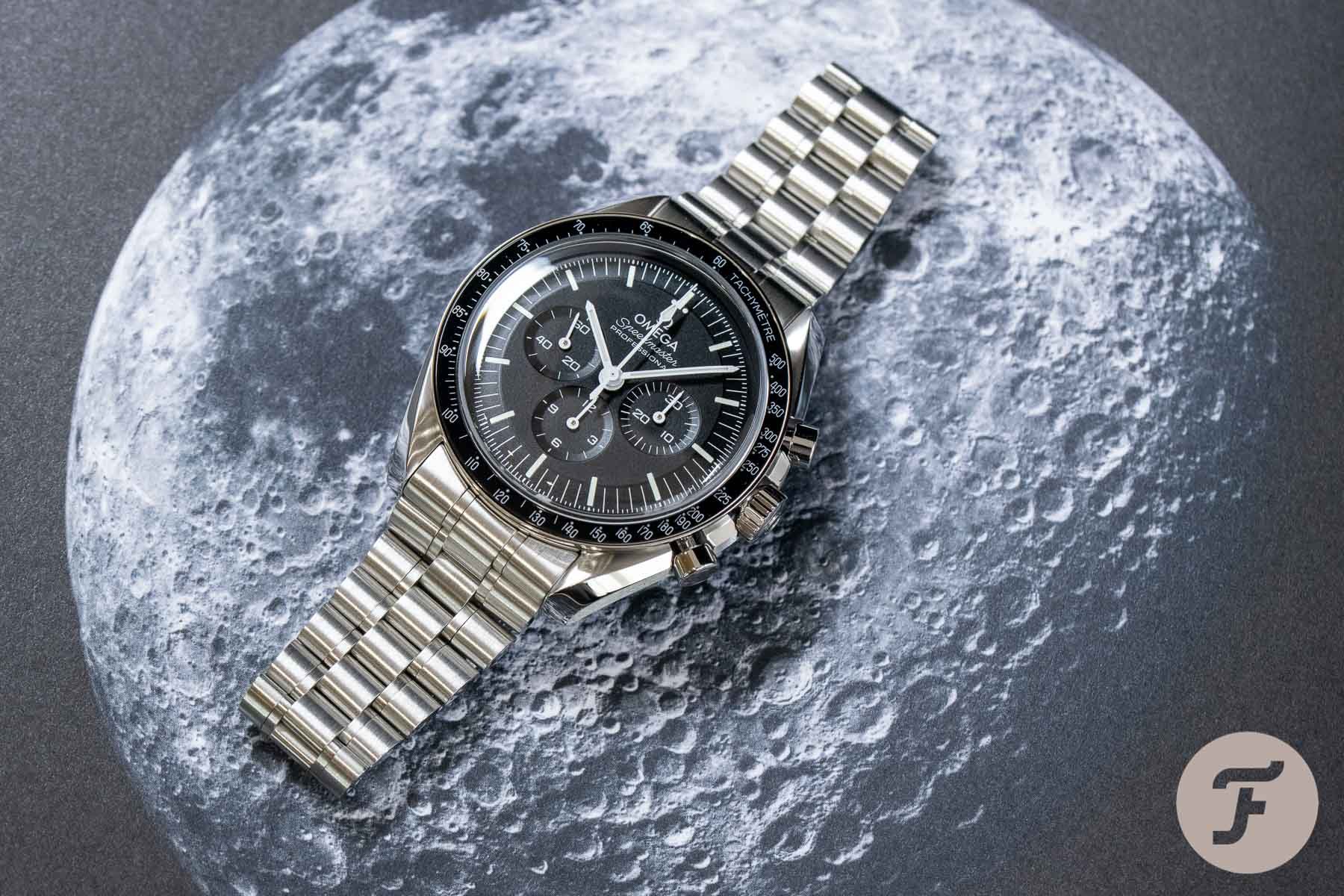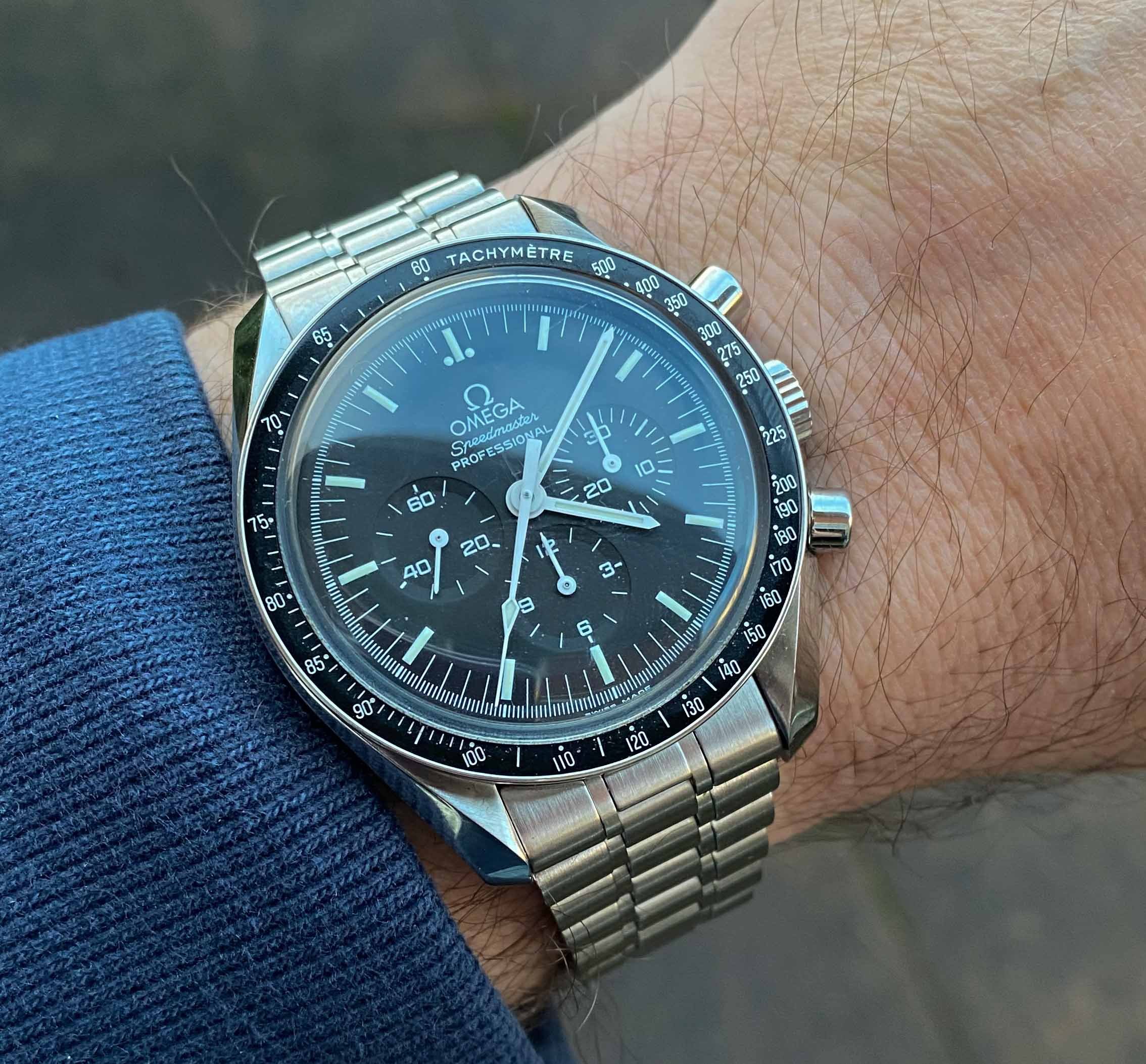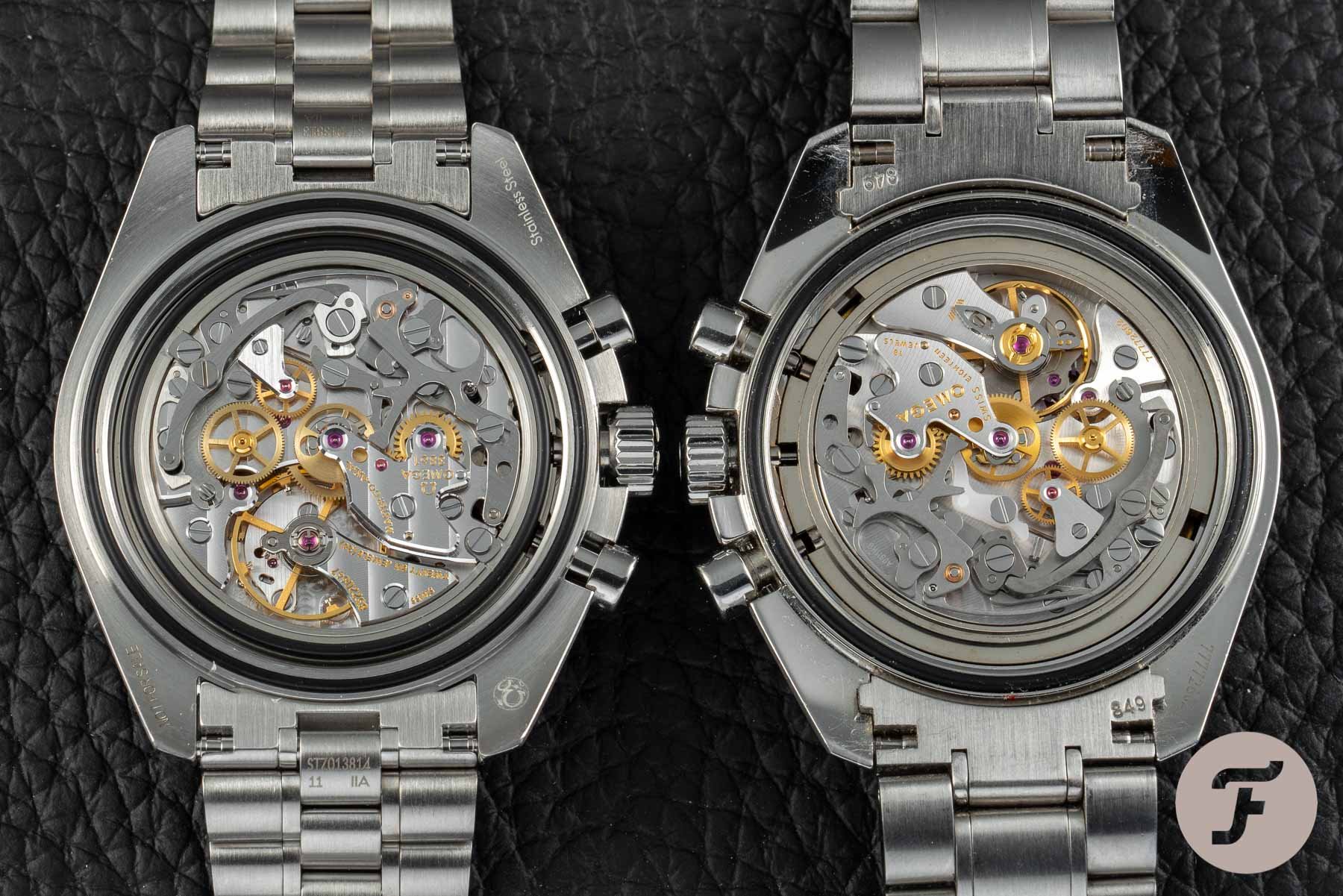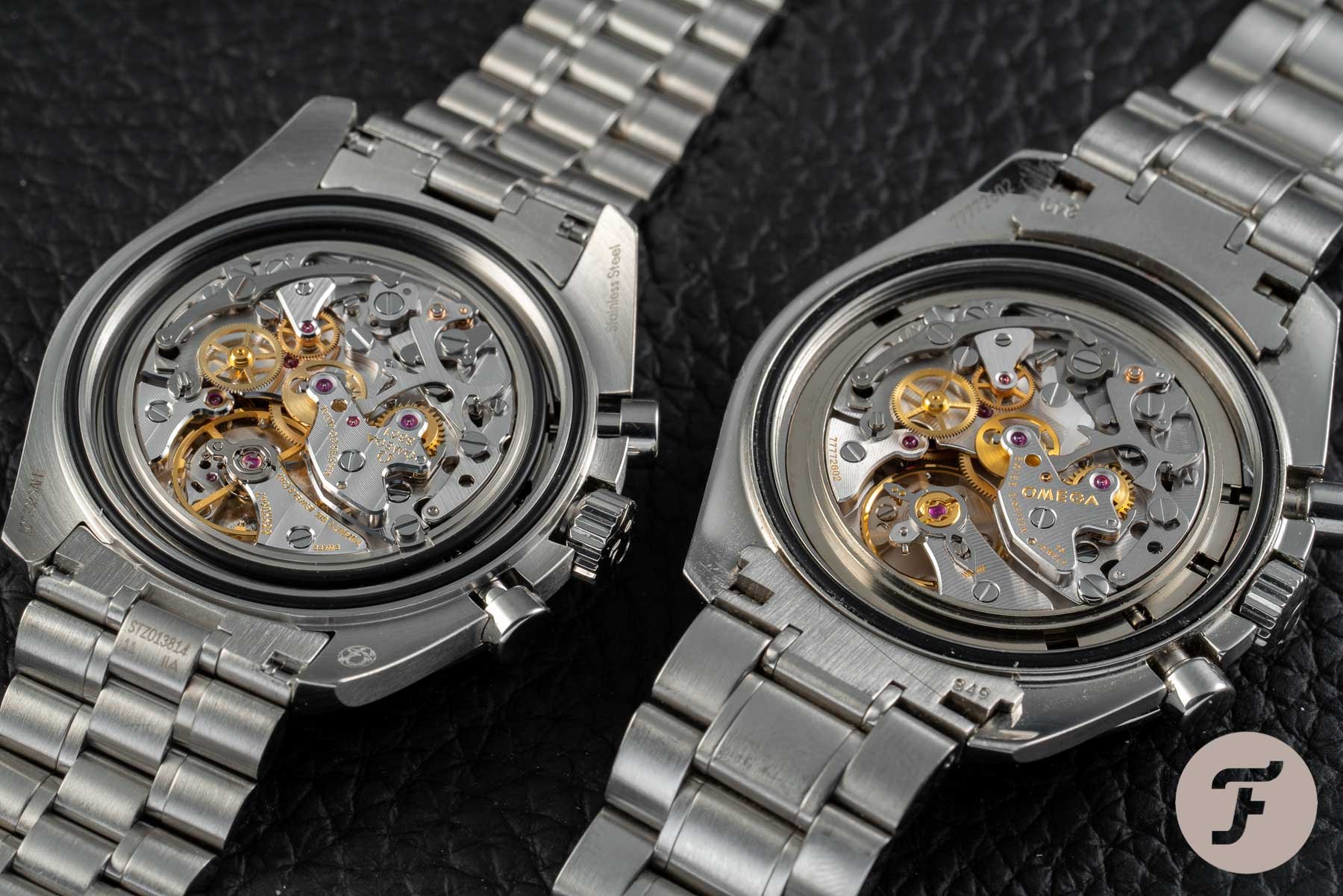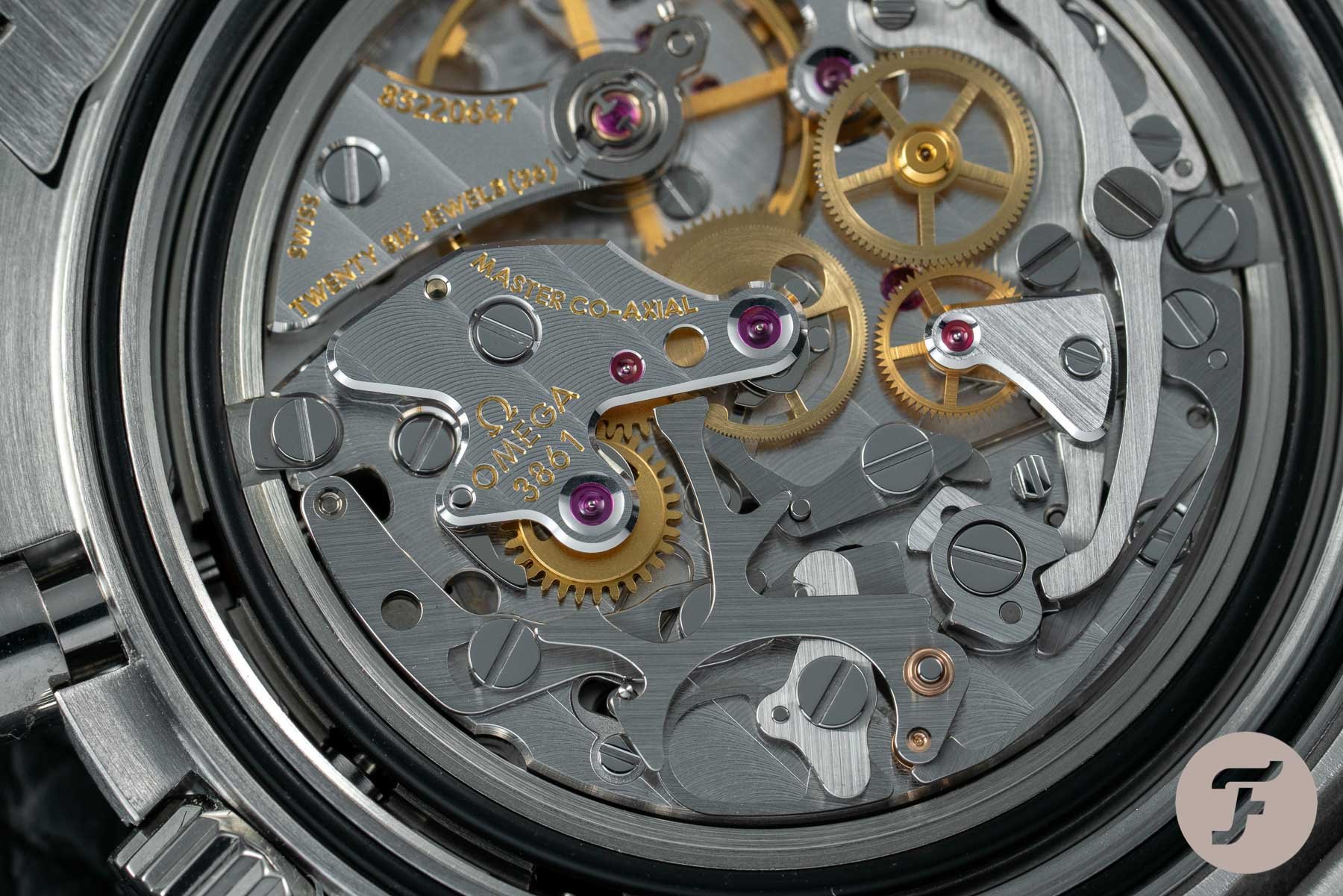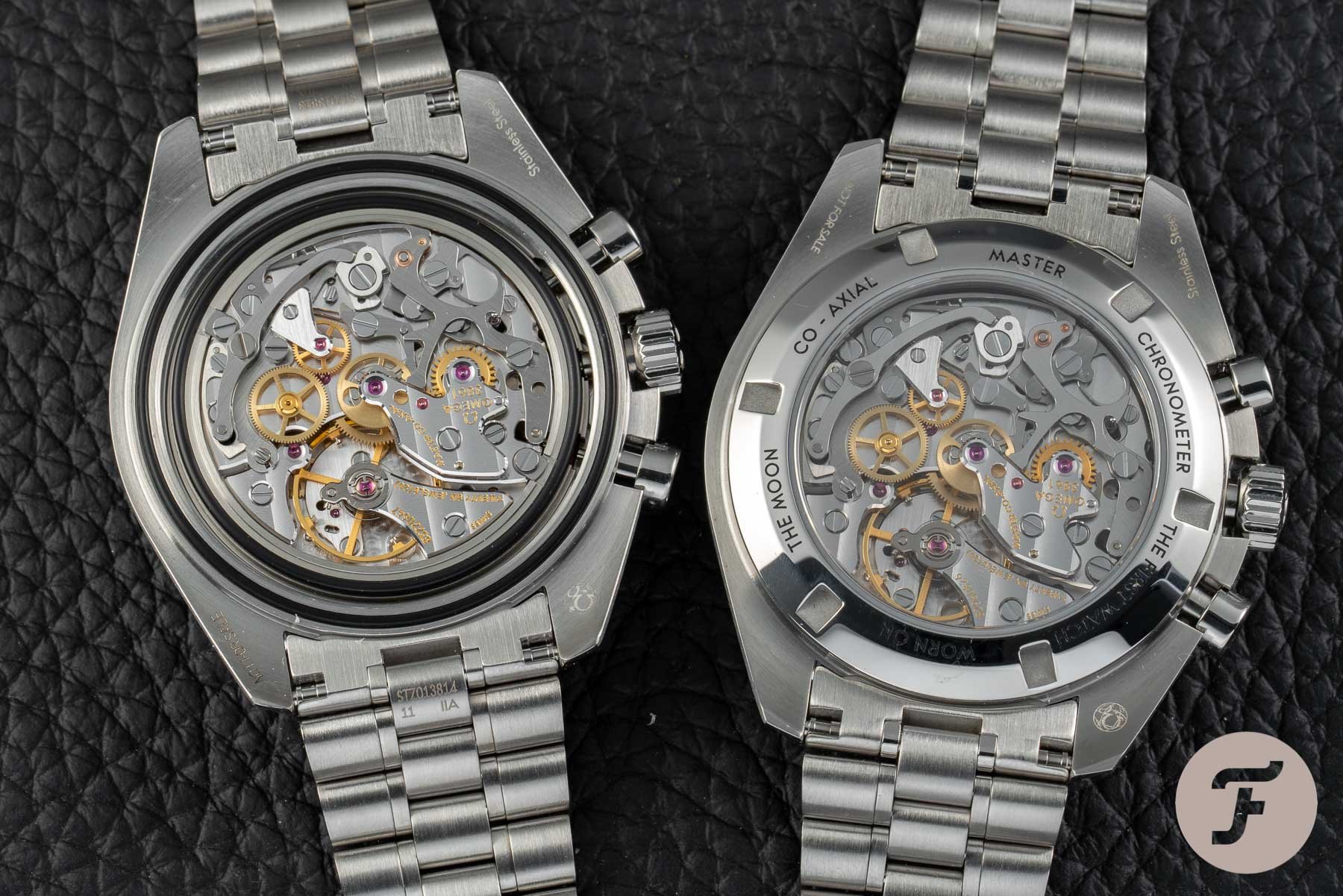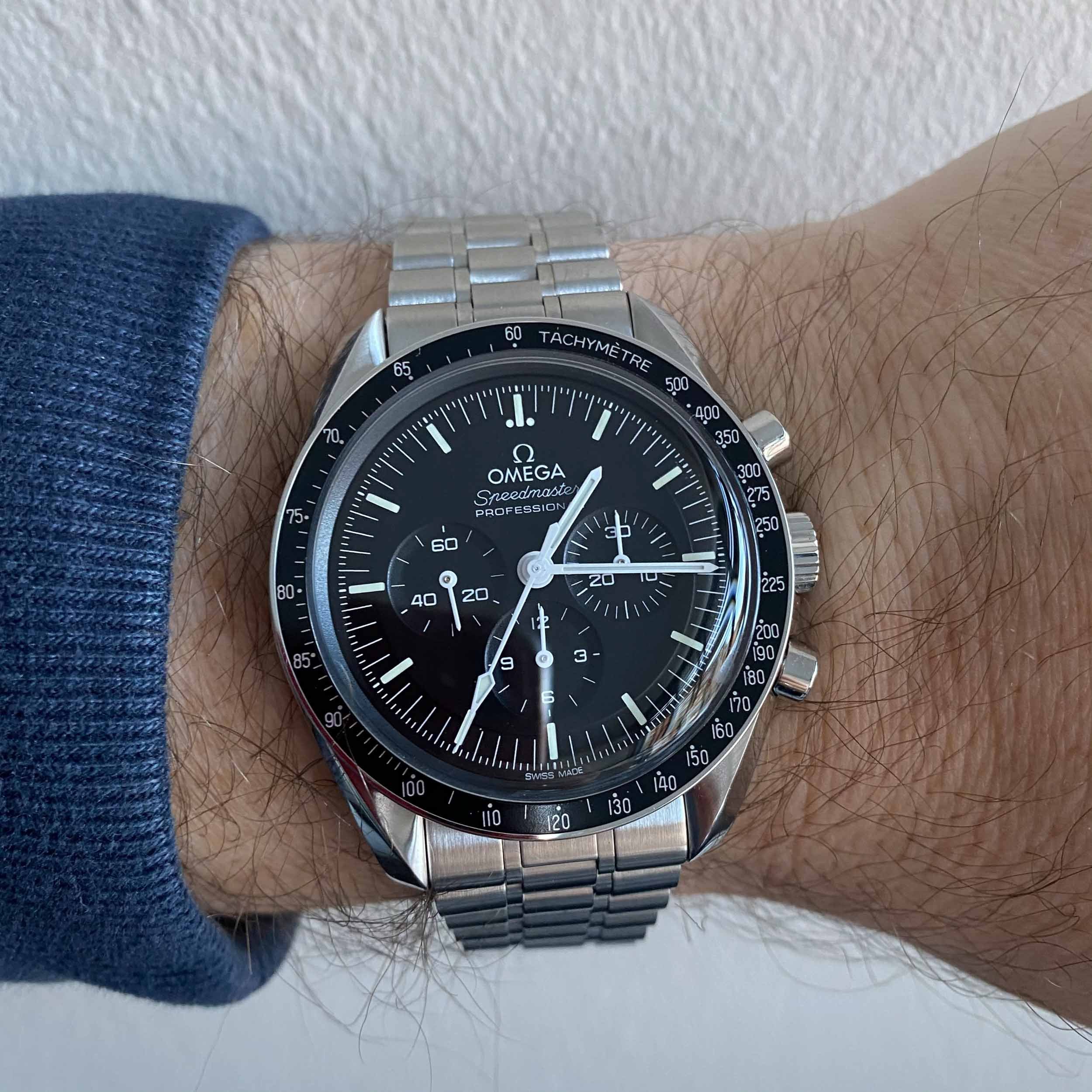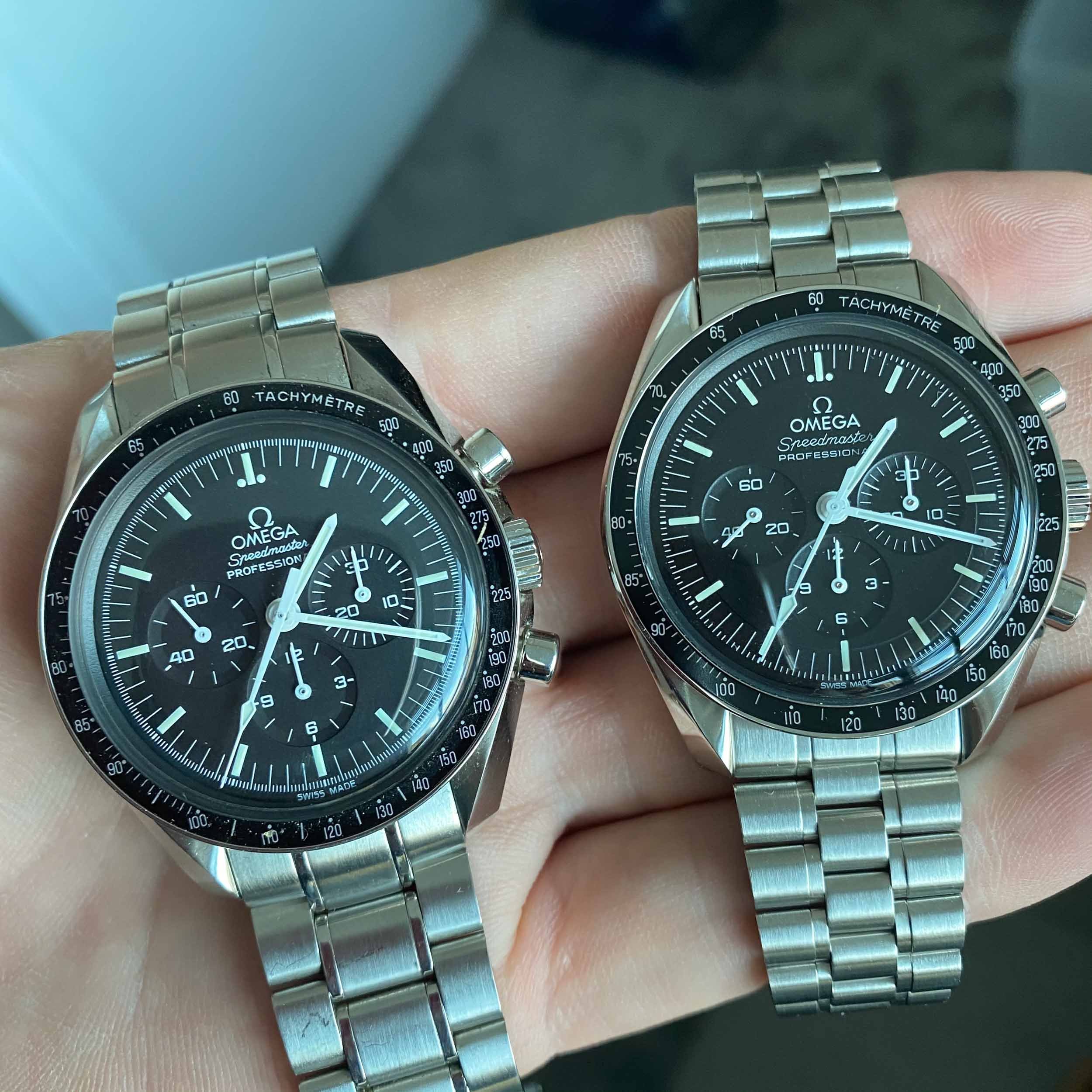Hands-On Watch Review: Omega Speedmaster Moonwatch — New Vs. Old
Omega broke the internet with the release of the new Omega Speedmaster Moonwatch Master Chronometer. The new Moonwatch is a hot topic, and I thought it would be interesting to make a “hands-on” comparison between the former Moonwatch and the new one. Everyone can see and read specifications, but how do these Moonwatch updates and changes look like in real life? Let’s have a closer look.
You don’t mess with a classic, that’s the unwritten rule. And if you do so, you need to be very — very! — careful. And that’s exactly what Omega did with the long-overdue update for their iconic Moonwatch model. Our incredibly in-depth introduction article on the new Omega Speedmaster Moonwatch Master Chronometer can be found here. It is not necessary to read that article first, but if you’re looking for something that’s not covered in this comparison article, go there.
The new reference 310.30.42.50.01.001
Omega was kind enough to send us a batch of the new Speedmaster Moonwatch Master Chronometer watches, including the sapphire, Hesalite, and Canopus (white gold) model. To be upfront here, I never owned the last iteration of the Moonwatch, the reference 311.30.42.30.01.005. I have a 3570.50 from 2013, which is very similar to the reference 311.30.42.30.01.005 that was in production from 2014 till 2020.
The main difference is in the bracelet (screws in the new one, instead of the old pin and tube set-up) and — of course — the huge Moonwatch box. So the pictures in this comparison article are of the new reference 310.30.42.50.01.001 and the old 3570.50. However, when it comes to pricing, packaging, etc, I will refer to the Moonwatch with reference 311.30.42.30.01.005 that is now being phased out.
Speedmaster Moonwatch Master Chronometer
It wasn’t even a rumor that the Moonwatch would be equipped with the new Master Chronometer caliber 3861. Omega already made this very clear during the last Speedy Tuesday event we had in December 2019 (seems like a long time ago now). But how would the brand’s designers do it? Would they still respect the design of the Moonwatch?
Would the incredibly clean dial be ruined by extra printing on there to indicate there’s a Master Chronometer movement? Well, if you know a bit about Omega and the course the brand’s been on for a few years, it shouldn’t be a surprise to hear that Omega knows all about us collectors and enthusiasts and would spend a lot of energy getting the details right. Omega did make some interesting choices, which I will touch upon during this hands-on comparison of these two watches, though.
Dial Changes — Printing
The first thing I noticed — when looking at the new Speedmaster Moonwatch Master Chronometer — is that something has been changed about the printing. The printed Omega logo is now smaller sized, the wordmark OMEGA is more spacious and therefore larger and the wording “Speedmaster” and “Professional” are now equally wide on the dial. On the old Moonwatch, as you can see, the logo and words were like a triangle. Narrow at the top and widest at “Professional”. In all honesty, I like the old printing better.
It doesn’t scream at you what it is (we all know what it is) and I liked the build-up from small to wide. I do like the “OMEGA” wording better on the new one, as it is more spacious, but I wouldn’t have minded Omega making the font size a bit smaller. It is not very visible on the picture, but the “Swiss Made” printing has been made a little bit smaller. Last but not least, the numerals of the sub-dials are less bold on the new Moonwatch.
The luminous hour markers are green-ish, and not faux patina (as some people assumed).
Dial Changes — Reading Seconds
An interesting change on the dial that many of you discovered already, is the second’s track. There are now three divisions, as you can see, instead of the five in the former Moonwatch. The use of three divisions has to do with the frequency of the movement, which is 21,600 vibrations per hour. This translates to 3Hz, hence the three divisions. It gives an easier readout when you stop the chronograph’s second hand.
The frequency of the new 3861 movement did not change in comparison to the caliber 1861 — that one also ticked at 21,600 vibrations per hour. I see this change in the divisions as a correction more than anything else. Also, we’ve seen this correction of the chronograph track on other Moonwatch variations before (Speedy Tuesday models, Apollo XI 50th anniversary, etc).
Dial Changes — Step it up
The first generations of Speedmaster (Professional) watches had a step dial. That means these dials weren’t flat, but that they had a slightly recessed minute track. Omega’s Speedmasters had a step dial until 1974. In that year, Omega introduced the Speedmaster reference 145.022-74 and the step was gone. These dials are just referred to as flat dials (while the sub-dials are of course still recessed). All Speedmaster Professional “Moonwatch” models produced between the last quarter of 1974 and until 2021, have a flat dial. I am happy that the step dial is back, it brings a bit more depth to proceedings.
Dial Changes — Hands
The first Speedmaster references (CK2915 and CK2998) came with broad arrow and alpha hands. It wasn’t until the third generation of Speedmasters, the reference 105.003 or “Ed White” that the white baton hands were introduced. This means that since 1963, the Speedmaster has been using white baton hands. But, not always exactly the same ones. Aside from the different luminous materials used over the years, there’s also one design change. The chronograph second hand used to have a pointed (or “teardrop”) counterweight, from the 105.003 till the last 145.012. With the introduction of the caliber 861 (145.022) in 1968, the drop counterweight hand was replaced with the flat counterweight chronograph hand. And it stayed this way, all the way until now.
Also interesting: with the introduction of the new Moonwatch Master Chronometer, the centers of the small hands are not white anymore, but silver color (unpainted).
A different case — 4th generation
Omega added the word “Professional” to the Speedmaster in 1964, with the introduction of reference 105.012. This successor of the “Ed White” — or 105.003 — is the first asymmetrical Speedmaster case. As you know, the word “Professional” wasn’t added because of the NASA qualification (which was also one year later, in 1965), but because of the introduction of the new case shape (and thus also the use of crown guards). It is the case of this 4th generation of Speedmasters, that Omega now also uses for the current Speedmaster Moonwatch Master Chronometer. As you can see in the picture above, the shape of the case changed not only by using the flat top lugs, also the profile changed.
What also changed is the shape of the pushers, they now have a flat cap. Much like the original 105.012 had. You can find comparison pictures further down below.
A different case — DO90 bezel
Another interesting element from the past that Omega used for the new Speedmaster Moonwatch is the dot-over-ninety (DON or DO90) bezel. Omega used this initially on Speedmasters till 1970. In our article on Omega Speedmaster bezels, you will find the different bezel variations. The bezel is made of steel, with an aluminum inlay. Omega decided not to use ceramic bezels but in my opinion, a ceramic bezel could have been deployed on the sapphire version of the new Speedmaster Professional Moonwatch. I don’t mind the aluminum bezel though, there’s just a higher risk of scratches and — perhaps — the occasional fading to grey after a long period.
A different case — double bevel
Another feature of vintage Speedmasters, up till 1967 (105.012-65) is the double bevel case back. As you can see in the picture above, the new Speedmaster Moonwatch also has this double bevel case back, whereas the former Moonwatch (311.30.42.30.01.005) just had a single bevel. As it was the case since 1967. In the picture below, you will see the case backs from the new Omega Speedmaster Moonwatch and the former one (or better said, the 3570.50) side by side.
A different case — new engraving
Besides the double bevel case back, Omega also changed the engraving. Of course, they added the Co-Axial Master Chronometer (Moonwatch Professional) text to make sure you know what you’ve bought. I could live without it, but I can also imagine Omega is proud to indicate that its iconic chronograph now has a METAS certified movement.
The biggest change is the new circular engraving. It now reads “Flight-Qualified By NASA In 1965 For All Manned Space Missions” instead of “Flight-Qualified By NASA For All Manned Space Missions”. Now, Omega added “in 1965” for a number of reasons. One of them is that the qualification (not a certification, as NASA doesn’t certify watches) took place in 1965 and was not exactly this Moonwatch version. NASA qualified the 105.003 with caliber 321. The later submitted 105.012 and 145.012 weren’t qualified either. Then, in 1978, NASA qualified the Speedmaster again for the Space Shuttle program.
Qualifying a Speedmaster
The discussion evolves around the qualification of the Speedmaster. As you can read above, the previous Speedmaster was also not qualified. The last one was the 145.022 with caliber 861 in 1978. Now, you can debate whether the caliber 1861 is that different from the qualified caliber 861. But in general, I would say that NASA qualified the entire watch based on the test results, not only the movement.
It is also important to note is that in 1978, the test work in order to be qualified was performed by Omega, not by NASA (as they did in 1965). The tests were performed based on the framework by NASA, as it was also used in 1965. Surely, the new watch has not been flight-qualified by NASA at all (neither was any other Moonwatch since 1978), but Omega let us know that they did perform the same tests as were done in 1978 to see if it would pass.
The case back
Anyway, Omega made a concession with the engraving in the case back. It will never please everyone. Some say that they prefer the old engraving as that was how it used to be, others rather would see “First Watch Worn On The Moon” only. Me personally, I don’t care that much. I like the fact that it refers to the history of this watch and the Moon program, that’s what it is all about, of course. The text on the case back is post-Moon landing anyway.
A different case — Soft Iron Inner Case
Those who have opened their Moonwatch (with a solid case back) know that there’s another case inside. This is a soft iron protective case that goes on top of the movement. It keeps the watch safe from magnetic fields, as it functions as a kind of Faraday cage. A fairly simple solution that has its limitations, of course. It is also how the Milgauss and other anti-magnetic watches were protected (and some still are), up to around 1,000 gauss.
As you know, the Omega Master Chronometer certified watches are anti-magnetic to at least 15,000 gauss (the “at least” is expressed as “>”). The Omega Master Chronometer caliber 3861 is anti-magnetic due to the use of certain alloys for its components, so there’s actually no need anymore for a soft-iron inner case. Omega did add an additional gasket or seal, to make it a perfect fit, though.
New vs. old bracelet
One of the things I don’t like about the former Omega Speedmaster Moonwatch 311.30.42.30.01.005 and 3570.50 references is the bracelet. It was introduced in 1996, as a successor of the more beautiful reference 1479 bracelet. That reference 1479 bracelet was in use since 1988 and has a lot of similarities with the new bracelet, which is, in my opinion, a massive upgrade.
The new bracelet is simply stunning. It looks very similar to the one used for the Speedmaster Apollo XI in Moonshine gold, but the inside is slightly different (more oval/rounded shape of the links) and the clasp is 1mm wider, adding up to 15mm in total. The bracelet wears amazingly comfortable, as I have been wearing my Moonshine since early 2019, I can attest to it.
New Bracelet — It Has Micro-Adjustment
What I didn’t like about the former bracelet, is the style. The links were quite big and it made the watch wear quite large on the wrist. How come? Well, the end pieces had a long center part, that sticks out quite a bit. The new bracelet doesn’t have that, the end piece is actually rather short. The former bracelet was comfortable, as long as the length would fit you. What I also didn’t particularly fancy, was the clasp. It was quite large and clunky.
The new clasp
The new clasp is based on the gold Moonshine version from 2019, which in its own turn is based on the 1969 gold Speedmaster BA145.022-69 watch. It had a thin clasp, with a groove motif. As written above, the new Moonwatch bracelet has a clasp that is slightly wider (15mm) but has the same features.
It is a short and comfortable clasp, with two release buttons. It doesn’t have a push-button inside, to extend or shorten the bracelet, but that does not mean it doesn’t have micro-adjustment. You need to use a toothpick or a little tool to adjust the bracelet by using the spring bar and the holes in the clasp. It isn’t as comfortable or easy as using a push-button, but it does save a lot of space and keeps the clasp size very modest.
Above, the two clasps from the inside. There has also been a question regarding the origin of the bracelet. We can tell you that the new bracelet is also Swiss made, even though it doesn’t say “Swiss Made” on the bracelet.
New Bracelet — Two Versions
The new Omega Speedmaster Professional Moonwatch has a beautiful bracelet, and if you paid a little attention, you probably noticed that the one on the Hesalite version of the watch is fully brushed and the one on the sapphire version has polished in-between links. I prefer the all brushed bracelet of the Speedmaster Moonwatch with Hesalite crystal. Interesting to note is that the white gold “Canopus” Speedmaster also comes with a fully brushed bracelet.
New Bracelet — It Fits The Old Moonwatch
As you can see above, the new Speedmaster bracelet will fit the former Moonwatch model. There’s a little ‘lip’ or ‘notch’ on the end link, which might need a bit of filing to get a 100% tight fit (I didn’t do so, of course, so you see a little gap between the end piece and the case). But, it does fit anyway, without making any modification. As long as you don’t suffer from OCD, there’s no filing necessary.
If you just purchased the former model Speedmaster Professional Moonwatch, acquiring the new bracelet might be a nice idea. Some people asked us whether they should sell or swap their old Moonwatch model for a new one. I can’t answer that question for you, but if the bracelet is the main reason, be aware that it will fit.
Update: The new Speedmaster bracelet will also fit the Silver Snoopy Award 50th anniversary edition.
Caliber 3861 vs. Caliber 1861
The Speedmaster Moonwatch has used a number of different movements. Without diving into every iteration, we can say that the first Speedmaster watches between 1957 and 1968 used the Lémania based caliber 321 movement. It was succeeded by the Lémania based caliber 861 in 1968 which was used all the way up to 1997. Caliber 861 is a shuttle-cam chronograph instead of a column-wheel chronograph like the 321.
It also uses a higher beat rate than the 321, which is 21,600vph versus 18,000vph. The 861 was more accurate, and also cheaper to produce. In 1997, Omega updated the Speedmaster Professional Moonwatch reference 3570.50 with a new movement, caliber 1861. This movement is the same as the last iteration of the 861 (as said, there are a few) but with a rhodium-plated finish. Older caliber 861 iterations had one jewel less, and even older ones had a copper-plated finish.
You could say that the most important change to the Speedmaster Moonwatch is the caliber 3861, hence the “Master Chronometer” addition to the official name of the watch. This movement isn’t new but was introduced in 2019 to the Speedmaster Apollo XI in Moonshine gold and in steel. Then, last October, it was again used for the Silver Snoopy Award 50th Anniversary, modified to have a little “automaton” on the backside.
Caliber 3861
Caliber 3861 has the same platform as the 1861, but Omega indicates that 50% of the parts have been replaced with non-interchangeable parts. Meaning, you can’t make a 1861 a 3861 by just replacing parts. The new caliber 3861 has the same operating frequency (21,600vph/3Hz), but there’s an increase in number of jewels (26). It is interesting that you can’t see the additional 8 jewels when comparing the movements side-by-side.
Of course, the new movement uses anti-magnetic alloys ( > 15,000 gauss) and the Co-axial escapement (less friction), which weren’t there in caliber 1861. The METAS organization certifies the new Speedmaster Moonwatch as “Master Chronometer”, by testing the watch as discussed in this podcast. The accuracy improved from +10/-1 seconds per day on average for a non-chronometer chronograph movement like caliber 1861 to +5/0 seconds per day on average. So there’s no slow running watch anymore. On top, this movement has a hacking function (the caliber 1861 does not).
Caliber 3861 — Nicer Finish
What becomes immediately clear when comparing the caliber 1861 and the caliber 3861, is the level of finish. Beveled angles, striping, and circular graining. It all looks amazing. Also, it doesn’t use the (ugly) Delrin brake anymore, which was basically a piece of nylon. All new Speedmaster Moonwatch models use the same caliber 3861 version (only the Moonshine model uses a Sedna-plated finish).
There’s no “3863” as there was an 1863, which was basically a 1861 with nicer decoration. The finish of the caliber 3861 is so nice, there’s no need for a special version for the Speedmaster Professional with a transparent case back.
A few more thoughts on the Speedmaster Moonwatch
Here it is, all the major differences between the new Moonwatch and the former model. Of course, I left out the box but discussed that in our initial article. The new Speedmaster Moonwatch comes in a smaller version of the previous Moonwatch box, without the goodies (additional straps, loupe, etc). The Speedmaster “Ed White” and platinum Speedmaster Calibre 321 will come with the larger box, though.
The new Speedmaster Moonwatch Master Chronometer is my pick when it comes to purchasing one. I like the old one, I have it and cherish it, but I will add a new version as well at some point. The new Moonwatch Master Chronometer has a lot of modern features that I like, but the new bracelet is one of the best things that happened to this classic chronograph.
What Omega didn’t address is the water resistance. It is now water-resistant to 50 meters. I don’t think it would have been super difficult to get it rated 100 meters, as some of the Speedmaster variations were rated 100 meters. That said, Omega let us know that 50 meters is fine to go swimming. Just don’t dive, and don’t use the pushers and crown in the water.
A special proposition
I also prefer the new movement, the step dial, and the drop counterweight on the chronograph second hand. The things that I don’t particularly fancy are minor things, marginal even. There are surely no dealbreakers when it comes to the new Omega Speedmaster Moonwatch 310.30.42.50.01.001. Even the retail price of €6,100 (300 Euro less if you want the version on a strap) is justified in my opinion. The former one was below the €5,000 mark, but the difference will get you more interesting details, a new case shape, a new bracelet, and, of course, the new Master Chronometer movement.
In the video below, I explain some more about the new Speedmaster Moonwatch.
If you have any questions or comments, feel free to leave them below in the comments below.
More information can be found on Omega online.

